- Guided Tours
- Paris for Couples
- Solo Traveller
The Paris Traveller
Making the best out of your trip to Paris
Featured , Seeing · December 15, 2021

Picasso Museum Paris, France: Everything You Need to Know
Picasso Museum Paris (Musée National Picasso) boasts the world’s most comprehensive art collection by the famous Spanish-born painter and sculptor. Located in the 17th-century Hôtel Salé, which is a historical monument, it houses hundreds of Pablo Ruiz Picasso’s paintings, sculptures and ceramics, and thousands of drawings. Also, visitors can admire the artist’s personal art collection encompassing masterpieces by Henri Matisse, Auguste Renoir, Paul Cezanne, and other artists.
Now, let’s dive in and see what you can expect when visiting Picasso Museum Paris .

Picasso Museum Paris: Service Info
Learn where to find Musée National Picasso , what opening times are, and how much time to plan for a visit.
You can find the museum in the Marais district, known for many preserved centuries-old mansions and Place des Vosges – one of the loveliest squares in the city.
If you start at the square, take Rue (Street) Des Francs Bourgeois and turn right to Rue Elzevir. You’ll find the exhibition venue (5, rue de Thorigny) to your left after crossing the second crossroad.
The nearest metro stations are St. Paul (line 1), Chemin Vert, and St. Sebastien Froissart (line 8).
Hours of Operation
The Picasso museum Paris is open from Tuesday to Sunday from 10:30 am (9:30 am on weekends) to 6 pm (the last admission is at 5 pm). Monday is a day off, as well as January 1, May 1, and December 25.
Full-price tickets cost €14, while audio-guide rentals cost €5. If you have Paris Museum Pass , you don’t pay the admission fee.
Recommended Visit Duration
Most visitors can tour the art collection in around two hours. But if you are passionate about Pablo Picasso’s work and life, you are likely to spend much more time visiting Hôtel Salé.
Permanent Collection of the Art Gallery
The permanent art collection of one of the must-see Paris museums for devotees of Pablo Picasso is organized in chronological order. And the works of art are on display in the series of roughly 400 exhibits throughout 37 showrooms on 5 floors.
So, you’ll have quite an experience while progressing from the garden – exhibiting maestro’s larger sculptures – through the basement and up to the attic. Besides browsing art pieces, you’ll have a chance to brush up on your knowledge and entertain yourself with interactive multimedia displays.
Also, you can enjoy the specialties of the renowned Maison Angelina and have champagne at the rooftop cafe of this famous Paris museum.

Artistic Periods in the Artist’s Life
Artistic periods introduced in the Picasso Museum in Paris are:
- Blue Period from 1901 to 1904
- Rose Period between 1904 and 1906
- African Period from 1907 to 1909
- Cubism between 1909 and 1912
- Classicism and Surrealism from 1918 to 1945
- Final years (decades) from the end of WWII to 1973
The first and second floors exhibit Pablo’s works of art created from 1895 to his death in 1973. On the top floor, examine his personal collection encompassing art pieces created by other artists, including Degas, Gaugin, and Miró. On the basement level, take a look at photos and engravings, among other objects.
The Picasso Museum Paris: Exhibition Venue’s Masterpieces
If you are in a hurry to tour some other Paris museums and attractions but would like to see this art gallery’s highlights, prioritize the following masterpieces:
- Self-portrait (1901), painted when Picasso was 20 years old. Belonging to Blue Period, this painting shows the depression the artist was going through after his friend’s death.
- Portrait of Olga in an Armchair (1918) is a neoclassical masterpiece created when Picasso met his future wife. Besides this one, Olga Khokhlova inspired many other art pieces.
- Deux Femmes Courant Sur La Plage (Two Women Running on the Beach, 1922) depicts two spirited ladies running while holding hands. Or, are they dancing maybe, which may be plausible since Olga was a ballet dancer?
- The Paul en Arlequin (1924) painting introduces Pablo’s and Olga’s son Paul dressed as a harlequin. In addition to this masterpiece, the Picasso Museum in Paris has many sketches and drawings depicting a harlequin.
- Portrait of Dora Maar (1937) is a Surrealist representation of a majestic Yugoslav photographer Dora Markovic seated in an armchair. Distortions, such as those showing the model’s face from different visual perspectives (frontal and profile views), became the characteristic of the maestro’s artistic style.
- Le Chevre (1950) is a sculpture representing the anatomy of a goat. The famous Spanish artist created Le Chevre while living in Southeastern France in a town known for pottery manufactories.
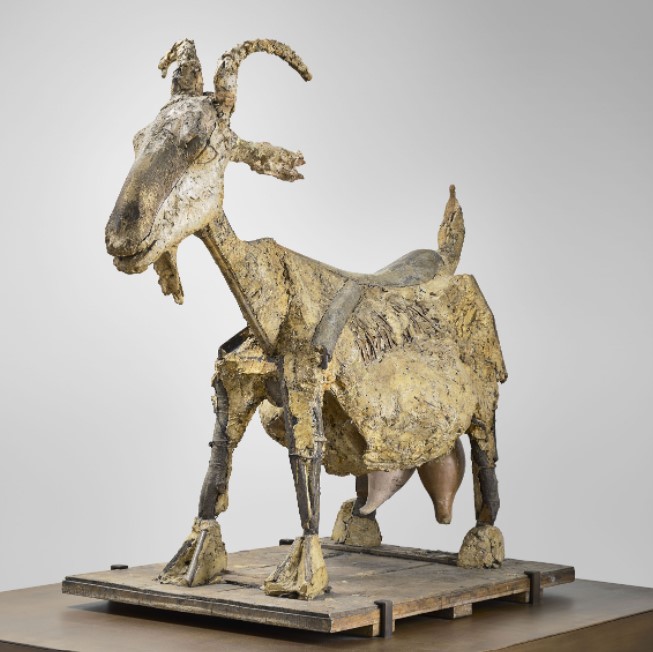
Where Else Can You See Picasso’s Works of Art in Paris?
Musée National Picasso-Paris features the most comprehensive collection of the Spanish master’s works. Still, his masterpieces are the highlights of some other Paris museums . To have a look at them, consider visiting:
- Museum of Modern Art (MOMA), located near Trocadero, across the River Seine from the Eiffel Tower.
- Centre Pompidou in Beaubourg, the neighboring district of Marais.
- Musée de l’Orangerie, in Jardin (Garden) des Tuileries, next to Louvre.
What Paris Museums Are Nearby?
While in Marais, consider visiting a few other outstanding Paris museums , which, surprisingly, remain under the radar for most travelers. These are:
- Cognacq-Jay (Rue Elzevir), exhibiting 18th-century furniture and paintings.
- Maison Victor Hugo (Place des Vosges), introducing the work and life of the celebrated writer and humanist.
- Museum Carnavalet (Rue des Francs-Bourgeois), presenting the history of Paris through various objects and paintings.
What’s more, these exhibition venues’ permanent exhibitions are free of charge.
Quick Facts About Pablo Picasso
- No artist’s works of art were stolen as much as Picasso’s in history.
- When Leonardo da Vinci’s Mona Lisa disappeared in 1911, Pablo was among the prime suspects.
- His father, who was also a painter, claimed that he would stop painting when Pablo Ruiz turns 14. He explained that his son will best him as a painter by then.
- The Cubist masterpiece Des Demoisseles d’Avignon – exhibited at MOMA – isn’t about the namesake city in Provence. It illustrates ladies of the night on Avignon Street in Barcelona.
- Although there are many art galleries devoted to Pablo Ruiz Picasso in Europe (Barcelona, Malaga, Antibes…), the Picasso Museum in Paris is the most complete.
Related Posts
Are you planning a trip to Paris? If you have yet to decide on a…
Paris France is a popular vacation destination. This is due in part to their beautiful…
Paris museums are the reason why many people call Paris the Capital of Arts. You…
Get on the List
You’ll also love.

Paris Art Galleries: a Guide for Discerning Art Lovers
Trending now.
- Privacy Policy
- Terms & Conditions
Copyright © 2024 The Paris Traveller · Theme by 17th Avenue
- Skip to main content
- Skip to primary sidebar
- Skip to footer

Top 9 Most Famous Artworks To See at the Picasso Museum in Paris
Debra Thimmesch Last Updated: March 27, 2023
Always wanted to see the great Picasso’s work in Paris where he created most of his art? The Musée National Picasso-Paris is the perfect place to do that! It has the largest public collection of Picasso’s work anywhere in the world, so there’s a lot to see. In this article, we’ll guide you to the most famous must-see artworks at the Picasso Museum, so you don’t miss anything important.
Pro Tip: Planning your trip to Paris? Bookmark this post in your browser so you can easily find it when you’re in the city. Check out our Paris Guide for more planning resources, our top Paris Museum tours for a memorable trip, and how to visit the Musée Picasso .
What You Have to See at the Picasso Museum in Paris
Did you know that just one museum holds over 5,000 works created by Pablo Picasso? Yep! You can find them at the Musée Picasso in the heart of Paris’ chic district: Le Marais. It’s filled with trendy restaurants, boutiques, and bars you’ll love exploring after your museum visit.
Picasso’s family donated an extensive personal archive of letters, sketchbooks, photographs, and more. And despite the number of works including paintings, ceramics, sculptures, and prints, it’s not a huge museum to explore.
It’s the perfect place to appreciate and discover the art and inner workings of Pablo Picasso. And a little context can’t hurt because, as art and visual culture historian John Berger wrote in his famous critique of Picasso’s art, both the artist and his artwork were complicated.
Picasso’s art was also radical and highly influential. At the Musée Picasso, you’ll begin to understand what all of the fuss was about. The museum changes its display of Picasso masterpieces every year, so some works may be rotated out to allow to allow other pieces to see the light of day. Now, step into the life and art of one of the longest-working artists of the Modernist period!
Not ready to book a tour? Find out how to visit the Musée Picasso .
9. 1901 Self-Portrait
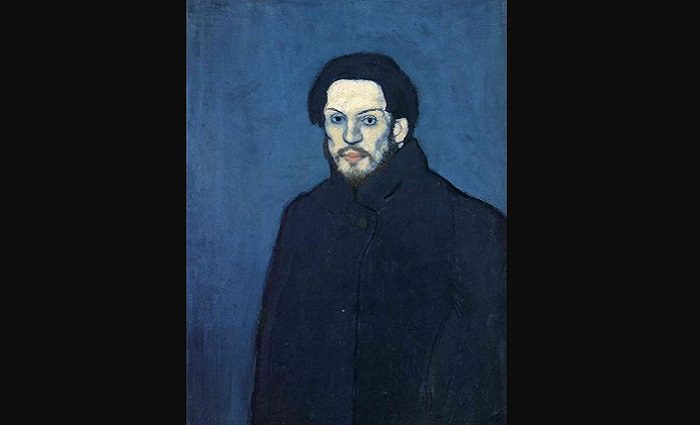
Pablo Picasso | 1901 | Oil on Canvas | Musée National Picasso-Paris
Picasso loved painting pictures of people considered to be social outcasts: tramps, prostitutes, and the like. In fact, he saw himself as a fringe figure, too. Still, like most artists did, he made his way from his home in Barcelona to Paris when he was 20 years old. Getting his start wasn’t easy, despite his obvious talent.
According to Picasso’s biographer John Richardson, the young artist was nearly penniless. He spent his days and nights roaming around Paris. However, he was most attracted to the bohemian district of Montmartre.
There he painted his melancholy version of Paris, notes Richardson, using cool colors like blue and gray which gave rise to the term “Blue Period.” His Blue Period lasted from 1901 to 1904.
This self-portrait is one of the first paintings of the Blue Period. He looks like one of the bohemian types he was so drawn to! The black clothing and blue background hint at his state of mind, filled with sadness over the recent tragic suicide of his close friend Carlos Casegemas, a fellow Spaniard.
8. Paulo as Harlequin
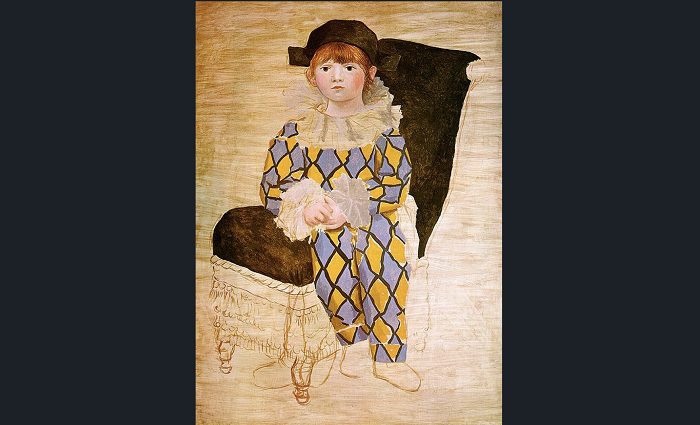
Pablo Picasso | 1924 | Oil on Canvas | Musée National Picasso-Paris
Would you guess that this painting is of his son Paulo? There’s a lot to dissect from this portrait of a son born into the Picasso family at a time when Pablo had found his success.
Picasso intentionally painted Paulo to look like Harlequin, which is one of the characters from Italian theater where you make things up as you go—aka improv. In Italian, it’s called Commedia dell’arte. Harlequin is known to be traditionally cheerful, witty, and resourceful, and always dressed in a checkered outfit. He’s also something of a trickster, so we can suppose Picasso saw some of that in his son.
This touching portrait emphasizes Picasso’s grasp of depicting people and objects with a possibly surprising degree of realism. Yes! He could draw and paint realistically. He just chose not to most of the time while he experimented with art. As the artworks on this list demonstrate, his style changed many, many times.
7. The Two Brothers
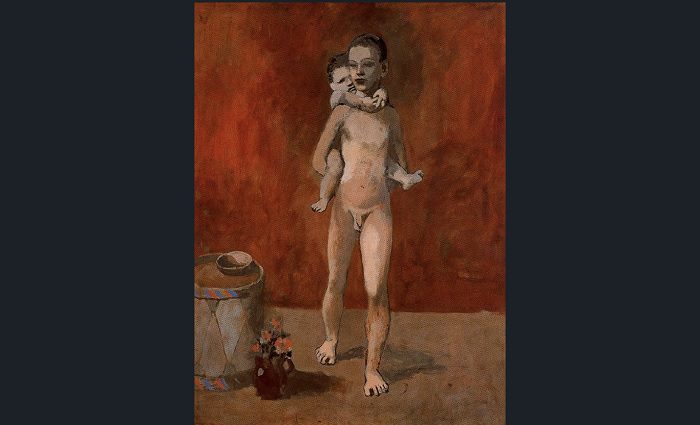
Pablo Picasso | 1906 | Oil on Canvas | Musée National Picasso-Paris
Now compare this work to his Blue Period of works. The warm colors like rose, red, ochre, and so forth, evoke new emotions as you look at it. So what happened? Well, Picasso traveled between Barcelona and Paris frequently until about 1904. That’s when he began doing something new in his studio in Montmartre. (He called it the “Bateau Lavoir” or “Laundry Barge.”)
Here his Rose Period began as the sadness of the Blue Period lifted. He still focused on marginal figures, however Picasso specialist Victoria Charles explains that the characters from the Rose Period are acrobats and other circus performers.
In this painting, the older of the brothers looks like an ancient Greek nude sculpture. As Charles points out, Picasso was extremely skilled at drawing and had learned how to draw and paint nude subjects in the academic style.
He pays homage to classical art even as he begins to distort figures and objects. Why did he distort them, you may wonder? For one thing, to make them more emotionally expressive. For another, he always looked for ways to make new art.

Not ready to book a tour? See if Paris tours are worth it .
6. Head of a Woman (Fernande)
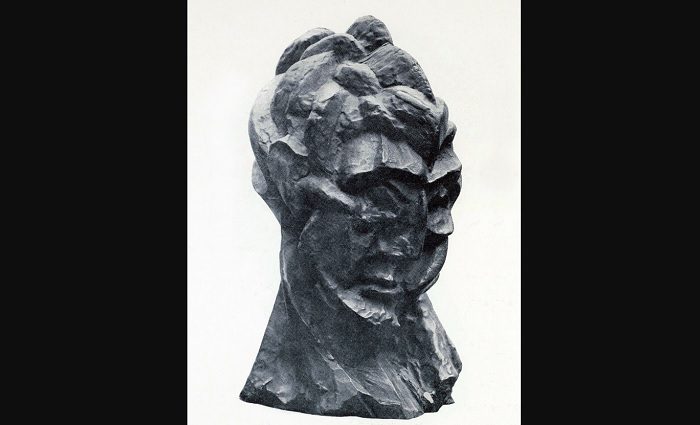
Pablo Picasso | 1909 | Bronze | Musée National Picasso-Paris
How untraditional for a woman’s features to be portrayed without the usual soft lines and feminity! This is Picasso’s first cubist sculpture. But what exactly is cubism and who was Fernande?
First, Fernande Olivier was Picasso’s lover and muse for seven tempestuous years. Fernande was an artist’s model and a true Paris bohemian. Jonathon Jones, another Picasso scholar, explains that Fernande was the model and inspiration for several of the artist’s early cubist works.
Cubism is a style of art that attempts to depict objects from more than one viewpoint. Take a good look at the bust of Fernande. It’s as though her image has been broken into multiple facets like a roughly cut diamond.
And speaking of facets, notice how geometrical all of the surfaces of this sculpture are. Now, imagine you’re floating around in space looking at this sculpture from a hundred different views at once. In a nutshell, that’s cubism.
You should know that this sculpture was not Picasso’s first cubist artwork. Art historians like Richardson and Charles will tell you it was a painting titled, Les Demoiselles d’Avignon or The Young Ladies of Avignon . That important artwork made in 1907 is at the Museum of Modern Art in New York City. Without going into great depth, suffice it to say that picture of prostitutes in a Barcelona brothel was a radical departure as far as art was concerned.
5. Still-Life with Caned Chair
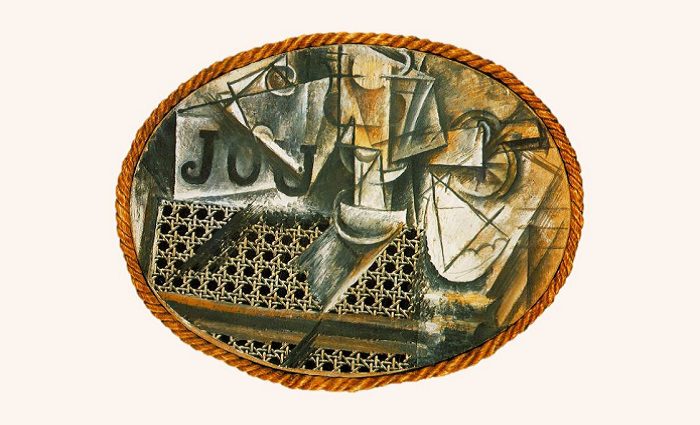
Pablo Picasso | 1912 | Oil and Oilcloth on Canvas, Rope Frame | Musée National Picasso-Paris
What could possibly be so interesting about painting the caning on a chair? Many have asked that same question, and there are a few answers with a little backstory first.
From 1908 to 1912, Picasso began collaborating with another young artist named Georges Braque. Both of these artists, points out Richardson, were co-inventors of cubism. They called the first phase of cubism “analytic” because you basically analyze the objects since they’re divided into small facets or cubes.
In the summer of 1912, Braque had an idea: they could introduce non-traditional or unrelated materials into their artworks. Like this painting, some elements like the rope and the oilcloth don’t have anything to do with traditional painting. Basically, what are you supposed to be looking at?
The representation in Still Life with Caned Chair seems to be happening on different levels—some closer to life, some just illusions. Richardson tells us it was Braque’s idea to use the oilcloth and Picasso picked right up on it. They called this phase of cubism “synthetic” since they were synthesizing or bringing together different objects and materials.
Here’s the kicker: when you get a closer look at this small painting (11.5 inches x 14.5 inches), you realize you aren’t looking at chair caning at all! Instead, it’s a simulation. The words in the title “Still-Life” provide a major clue as to what is being represented here.
Put simply, you’re actually looking a café table! On top of the table, there’s a knife, a glass, part of a newspaper, and more. Why did you perhaps not see it at first? Because the objects are so fragmented that it’s hard to tell what they are. Welcome to the cubist revolution!
4. Still-Life with Pitcher and Apples
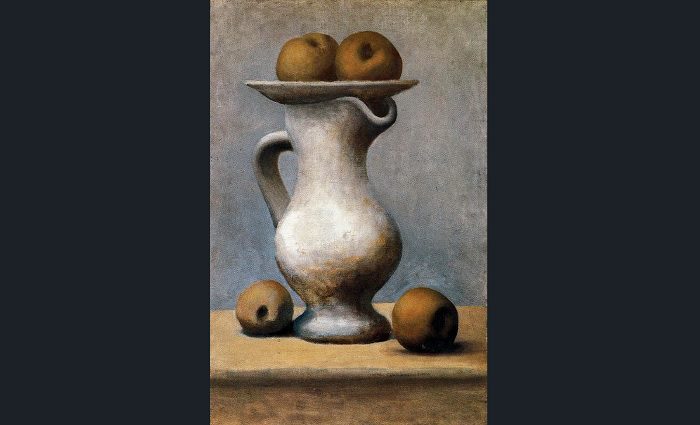
Pablo Picasso | 1919 | Oil on Canvas | Musée National Picasso-Paris
Just a few years later, Picasso has shifted his art again, so compare this to the two above. Picasso and Braque experimented with adding more and more color during the synthetic period. In contrast, analytic cubism featured subdued tones. Sometimes the artworks were nearly monochromatic.
When World War I began, everything changed. According to Charles, Braque went off to war where he was wounded in battle. Fortunately, he recovered and began painting again after 1917. Picasso was lucky to avoid fighting, but the war deeply influenced his art.
He transitioned completely to a different style evoking classical Greek and Roman art. Other artists did, too. It seemed safe and anything but radical in an era when peace seemed difficult to find.
The facets or cubes are gone in the pitcher and fruit above. Picasso is once again creating the illusion of depth. In contrast, cubist paintings and drawings seemed to involve shallow space. Still-life paintings like this one remained a favorite subject of the artist throughout his career according to Richardson. This rustic, pleasing picture was discovered after Picasso’s death.

3. The Kiss
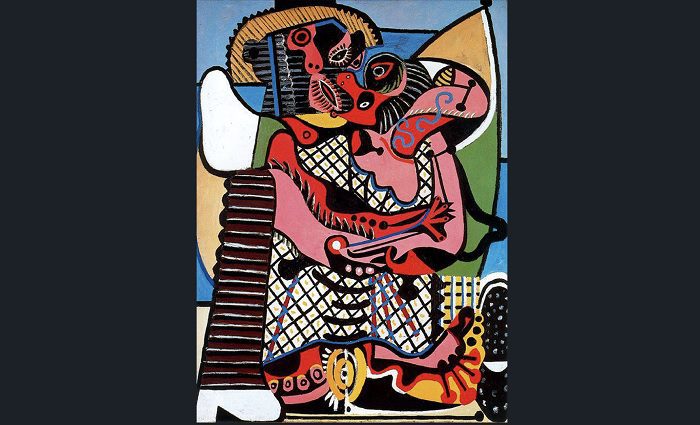
Pablo Picasso | 1925 | Oil on Canvas | Musée National Picasso-Paris
What could be more traditional than a painting or sculpture of a couple locked in an amorous embrace? Well, perhaps a painting that looks more like you and your partner in real life. Yet that is precisely why we’re still talking about Picasso, since this painting doesn’t call to mind Rodin’s famous sculpture or Klimt’s equally well-known painting .
That’s because Picasso was in his surrealist phase when he painted this colorful and—let’s face it—highly erotic picture. Well, it’s highly erotic if you can figure out what’s actually going on here.
According to art historian and curator Stephen Kern, this scene could make even the most worldly person blush. Yet it was common for the surrealist artists to incorporate erotic themes and imagery in their art.
Make sure to note that there is a commonality between Picasso’s colorful synthetic cubist paintings and his surrealist ones. If you look closely, you’ll see that in true Picasso style, he’s representing multiple viewpoints at once—and all of them are pretty racy!
2. Portrait of Dora Maar
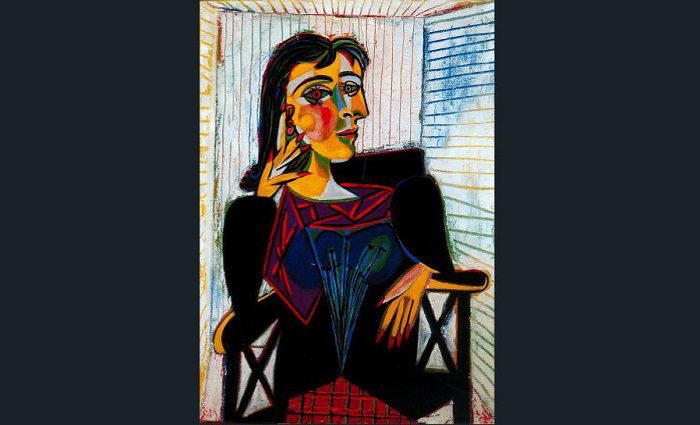
Pablo Picasso | 1937 | Oil on Canvas | Musée National Picasso-Paris
Would you be flattered if your lover painted you with a double expression? Well, that’s exactly what Picasso did. Meet Dora Maar. She and Picasso were introduced by their mutual friend Paul Eluard in 1936, though they had met earlier on a movie set, according to art historian Michel Ruten. Both were artists and both moved in a glamorous circle of artists, writers, and other cultural greats of the era.
Picasso and Dora were together for nine years, and he painted this colorful portrait just one year after they met. It’s created in Picasso’s surrealist style, hence the odd, double face of Dora. She is looking directly at the artist. Or is she?
The writer André Malraux revealed a telling quote by Picasso: “Women are suffering machines. When I paint a woman in an armchair, the chair is old age and death, right? Too bad for her. Or it’s to protect her…” The statement hardly casts the artist in a positive light. Indeed, he was notoriously unkind, to say the least, to his women partners.
1. Woman in the Garden
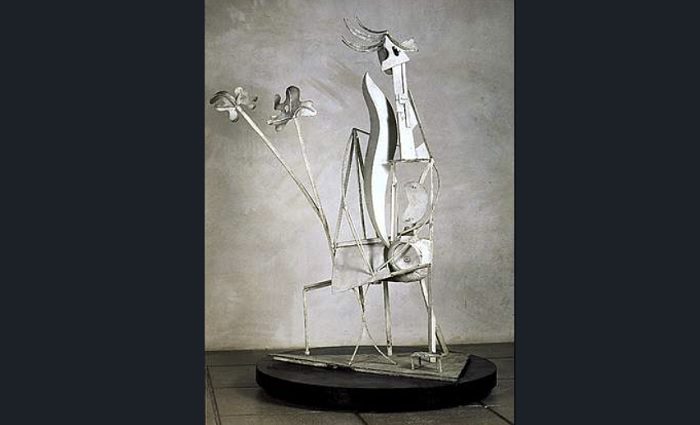
Pablo Picasso | 1929 | Iron, Paint, and Solder | Musée National Picasso-Paris
At 8.5 feet by 3.8 feet by 2.7 feet, Woman in the Garden is Picasso’s largest sculpture and that feat earns our top spot on this list. Granted, it’s no David , but we’re looking at what Picasso accomplished. It’s by no means his first sculpture either.
As Carmen Fernández Aparicio explains, Picasso hadn’t used iron before making this sculpture and alternate versions of it. He asked for help from a Spanish friend, a sculptor named Julio González.
This is another surrealist artwork. It seems like a bold drawing from outer space. Once again, here is Picasso thinking about the different ways or views you can look at an object or group of objects. In this case, it’s a woman in a garden—such a simple subject like most of his artworks, yet hard to identify.
Picasso designed this artwork to pay homage to his good friend, the poet and art critic Guillaume Apollinaire who wanted an eye-catching work of art in his garden at the Château de Boisgeloup in Normandy.
What a perfect sculpture for an outdoor garden! Like other surrealist art, there are strange aspects to it that you might not have caught, which is why it’s helpful to have someone explain what you’re seeing. The large female figure runs with her hands up and the wind in her hair. Her body morphs into leaves as she fuses with the garden. With an understanding of the art and artist, you can better appreciate its unique character.
Not ready to book a tour? Check out our best Paris tours to take and why .
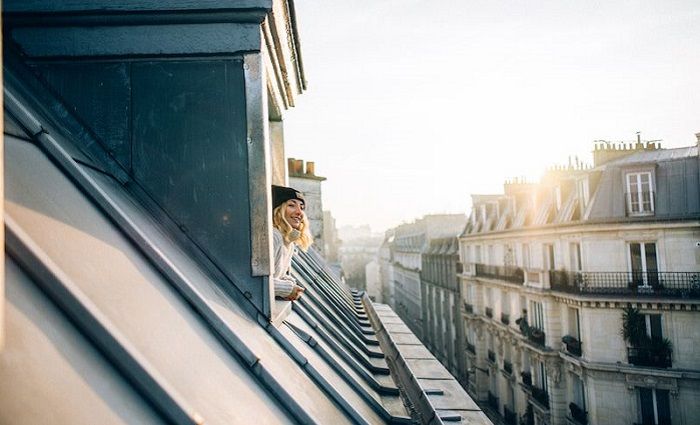
Where To Stay in Paris
With a city as magnificent as Paris, it can be hard to find the perfect hotel at the perfect price. Explore the best hotels and places to stay in these incredible neighborhoods in Paris.
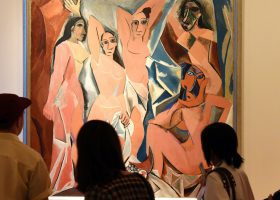
About Debra Thimmesch
Debra Thimmesch is an art historian, researcher, independent scholar, editor, and visual artist. She mentors undergraduate and graduate students in the history of art and is a published author. Her work has appeared in publications such as The Brooklyn Rail, Art Papers, and Blind Field and a variety of exhibition catalogs. Her BA, MA, and PhD in art history have provided only part of the broader, global view of the history of art that she has acquired through the years. As a world traveler, she considers herself a sort of pilgrim of great art and architecture. As a teacher and tour guide, she has led private tours and student groups to numerous sites in the US, the UK, and Europe.
Reader Interactions
Leave a comment cancel reply.
Your email address will not be published. Required fields are marked *
- Travel Guide
- In The Press
POLICY & TERMS
- Cancellation Policy
- Terms & Conditions
- Privacy Policy


- Virginia Beach
- History & facts
- Famous people
- Famous landmarks
- AI interviews
- Science & Nature
- Tech & Business
Discover something new everyday
- Famous places
- Food & Drinks
- Tech & Business
Famous places , Paris , Travel
A Visit to the Picasso Museum in Paris: Full Guide to Enjoy Your Day
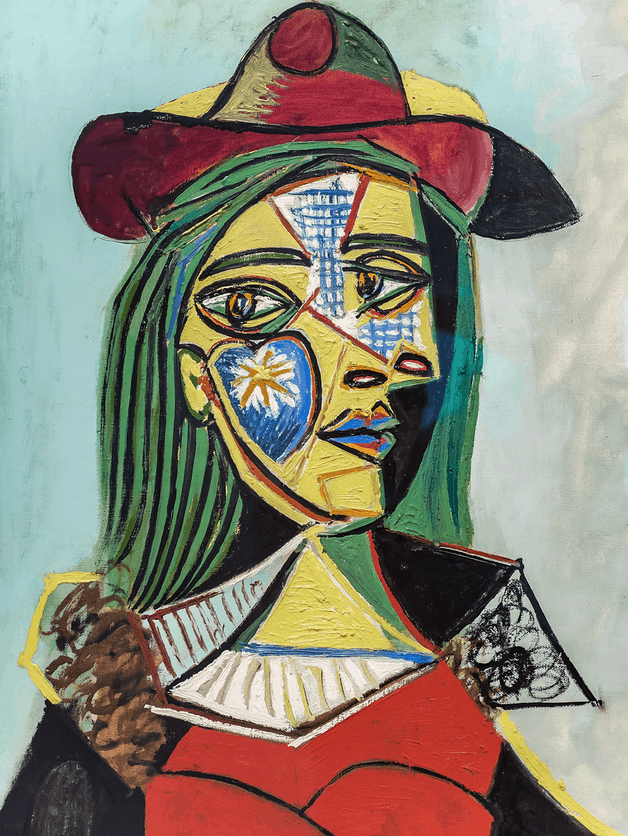
Image courtesy of Edgardo Olivera on Flickr
Read Next →

Paris - Food & restaurants
Top 20 non-touristy restaurants in Montmartre

Barcelona - Activities & Things to do
20 Best Thrift Stores of Barcelona (with map)

Paris - By month
10 Best Techno Clubs in Paris
A little background on pablo picasso.
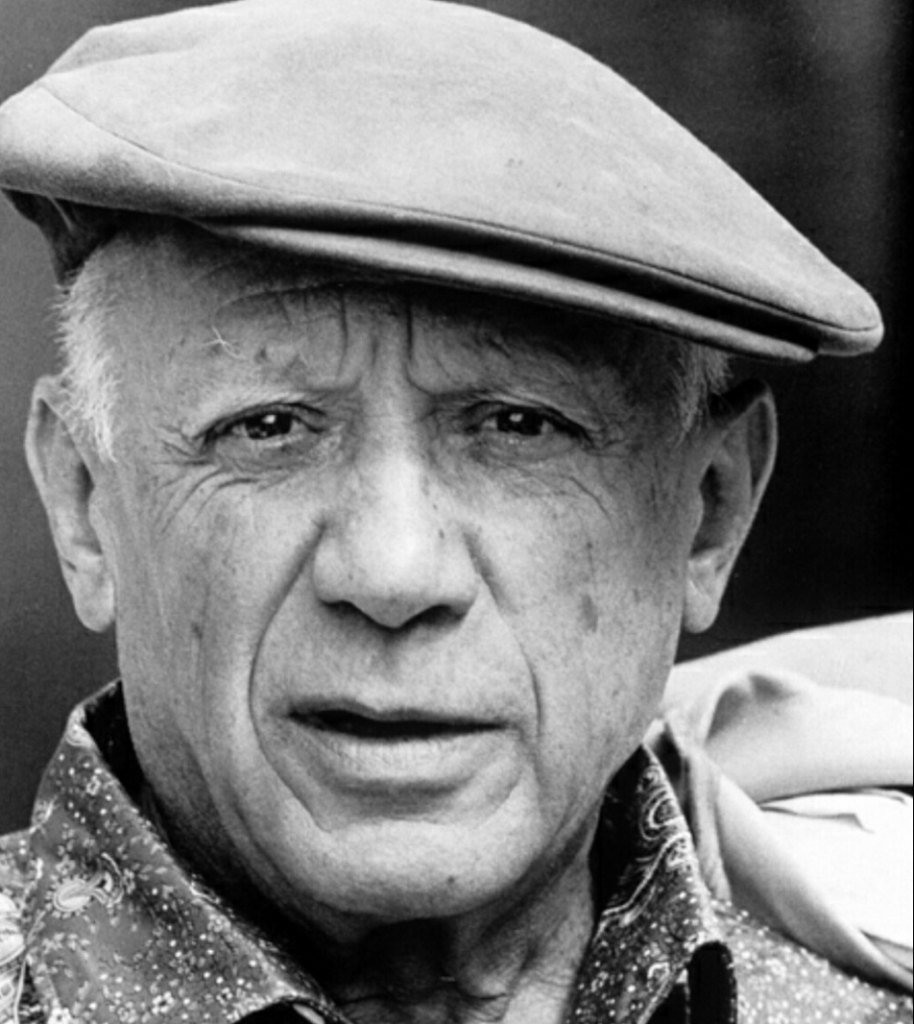
Pablo Picasso 1962 – Photo via Wikimedia Commons, Unknown Author
How to get to the Picasso Museum
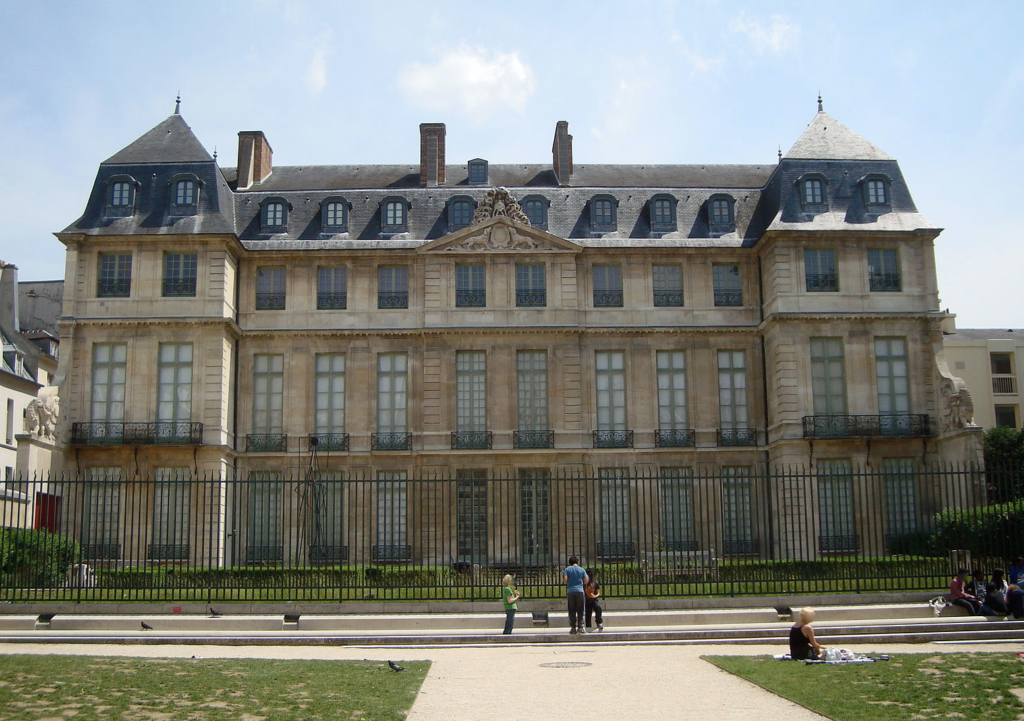
Photo courtesy of LPLT on Wikimedia Commons
Picasso Museum – 5 Rue de Thorigny, 75003 Paris
Metro: saint-sebastien froissart, bus: line 96, open sunday – tuesday 9:30am – 6pm, admission: full price €14, free to the public the 1st sunday of every month, the best way to visit the picasso museum in paris.

What to do around the Picasso Museum
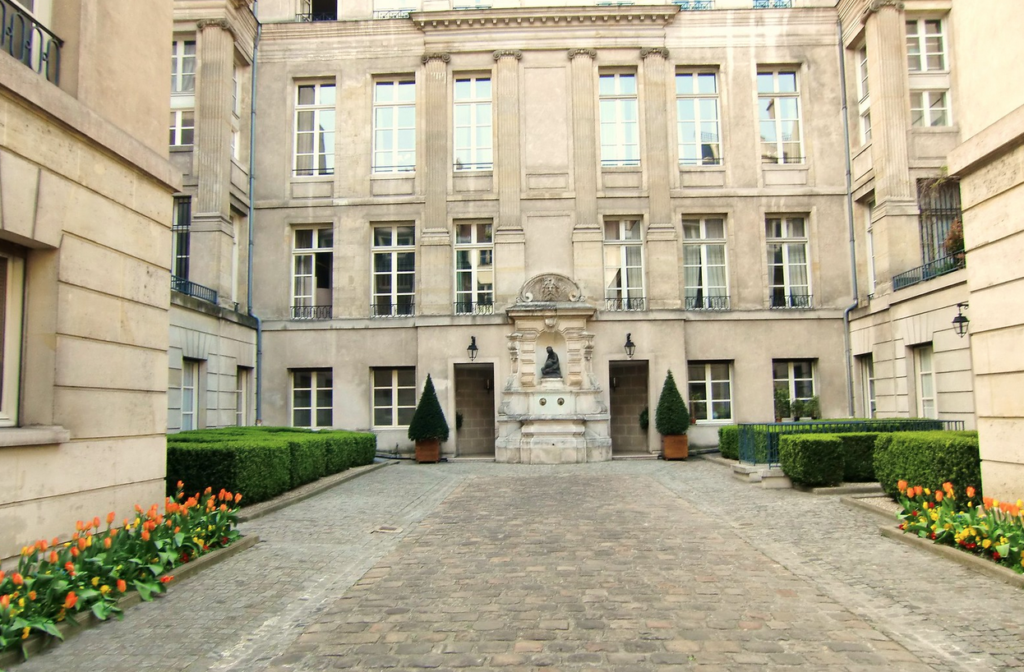
Photo courtesy of Photosylvia on Flickr
Planning a trip to Paris ? Get ready !
These are Amazon’s best-selling travel products that you may need for coming to Paris.
- The best travel book : Rick Steves – Paris 2023 – Learn more here
- Fodor’s Paris 2024 – Learn more here
Travel Gear
- Venture Pal Lightweight Backpack – Learn more here
- Samsonite Winfield 2 28″ Luggage – Learn more here
- Swig Savvy’s Stainless Steel Insulated Water Bottle – Learn more here
Check Amazon’s best-seller list for the most popular travel accessories. We sometimes read this list just to find out what new travel products people are buying.
Jordan has been writing a Paris blog for two years and became a Discover Walks writer in early 2018. While most of our Paris writers are born and raised Parisians, Jordan is not. She is a Californian who moved to Paris in 2013. We like her different point of view when she writes - of course our tour guides are a great source of tips and inspiration in her articles. We hope you enjoy all of them.
Hello & Welcome

Popular Articles

Top 20 Streets to See in Paris

Paris in two days

Top 15 Things to do Around the Eiffel Tower

The Best Way to Visit Paris Museums

Top 15 Fashion Stores in Le Marais
Visit europe with discover walks.
- Paris walking tours
- Montmartre walking tour
- Lisbon walking tours
- Prague walking tours
- Barcelona walking tours
- Private tours in Europe
- Privacy policy
© 2024 Charing Cross Corporation

Prices and membership
Book your time of entry through our online ticket desk for priority access into the museum. (This priority access is only guaranteed in the half hour following the time of entry indicated on the ticket.)
Museum entry
Regular price: €16
Reduced price: €12 (the applicable rate depends on the exhibitions spaces opened)
The museum is free on the 1st Sunday of the month
Audioguide
Audioguide rental in addition to entry (ticket or proof of eligibility for free entry)
Regular price: €5
Reduced price*: €4
*Reduced price is available only at the Museum Desk upon presentation of proof: holders of the Paris Museum Pass, EEA residents (temporary or permanent) aged 0-25; handicap persons.
Paris Museum Pass
The museum accepts the Paris Museum Pass. The Paris Museum Pass is also available to purchase at the ticket desk of the museum.
Conditions for free entry
Entry with presentation of proof, no ticket needed
Free access
PDF - 84.48 KB
Museum Rules and General conditions of sale
Visitors regulation.
PDF - 146.94 KB
CGV Individuals
PDF - 319.26 KB
PRICE LIST 2024
PDF - 192.8 KB
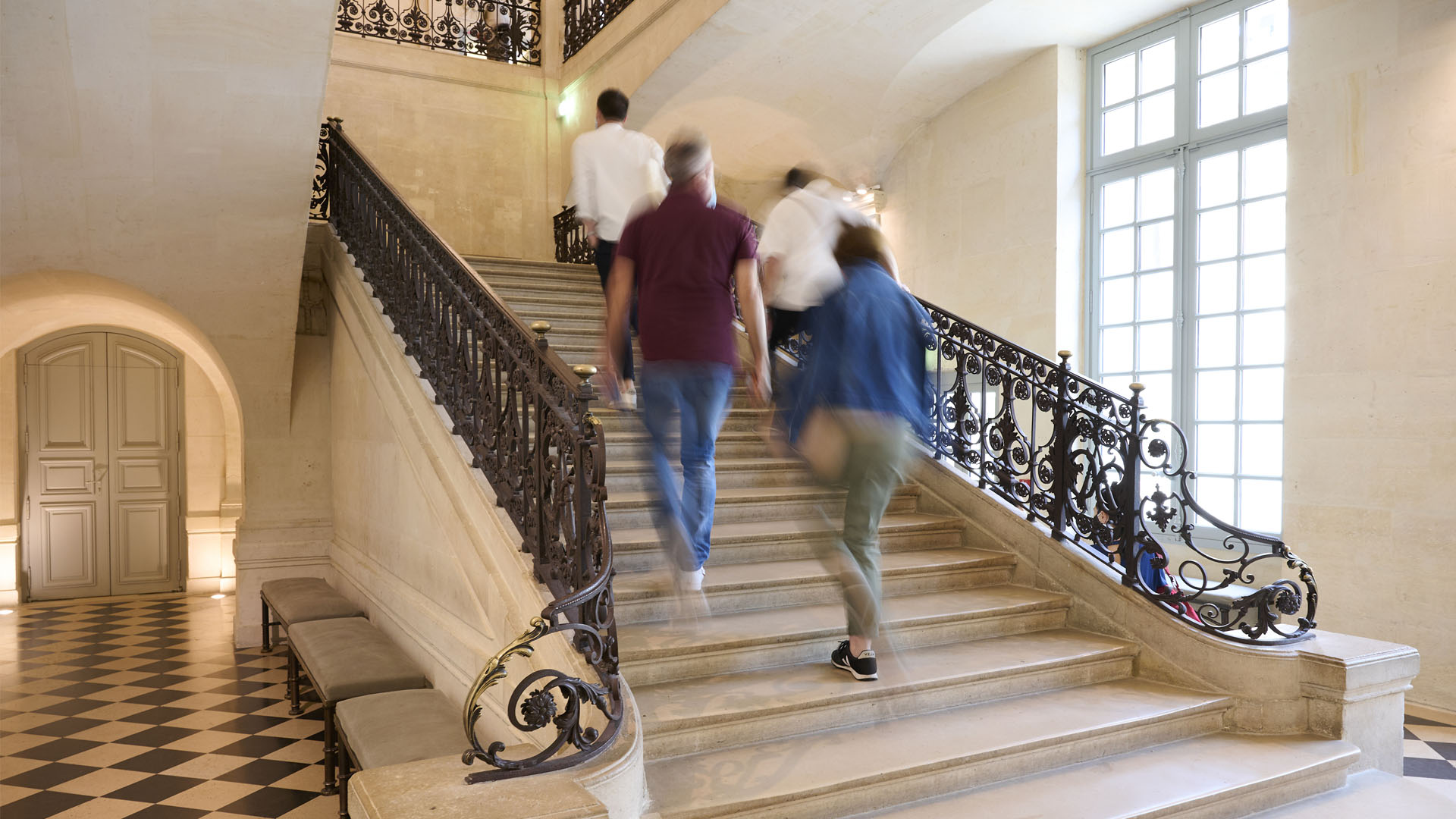
Picasso Pass member
TheBetterVacation.com
Everything about tourist attractions
Picasso Museum Paris – tickets, prices, hours, what to expect

Picasso Museum in Paris showcases the paintings, drawings, engravings, and sculptures of the Spanish-born artist Pablo Picasso.
Also called Musée National Picasso, the museum exhibits 400 of his best works, and paintings by other artists such as Paul Cézanne, Henri Rousseau, and Henri Matisse, which were part of Picasso’s collection.
With around 5000 items on display, it is the most extensive collection of works of the most well-known artist of the 20th century.
This article covers everything you must know before booking tickets for the Paris’ Picasso Museum.
Top Picasso Museum Paris Tickets
# Picasso Museum tickets # Picasso Museum + Musee Rodin trip # Picasso Museum + Dali Museum
Table of contents
What to expect at picasso museum, where to book tickets , how do online tickets work, picasso museum ticket prices, picasso museum tickets, how to reach picasso museum, opening hours of picasso museum, how long does the tour take, best time to visit picasso museum, map of picasso museum, visiting with kids, history of picasso museum, faqs about the picasso museum paris.
Picasso Museum in Paris features nearly 5000 works of Pablo Picasso comprising paintings, sculptures, inscriptions, engravings and over 10,000 archival items.
Collections of Picasso’s contemporaries are also on display.
The museum is housed in a 17th century building that was the residence of Pierre Aubert, the collector of the “salt tax”, who kept a large part of it for himself and named his home Hôtel salé (Salt hall).
Some of the worth noticing paintings are Des Demoiselles d’Avignon, Guernica, Massacre In Korea, The Old Guitarist, and The Weeping Woman.
On Paris Picasso Museum tour you learn about the journey and legacy of this legendary artist who still inspires artists all over the world.
Back to Top
Tickets to the Picasso Museum Paris are available online and at the attraction.
Online ticket prices tend to be cheaper than tickets at the venue.
When you buy online, you can avoid the long queues at the attraction’s ticket counters.
Because some attractions sell a limited number of tickets, during peak days they may sell out. Booking early helps avoid last-minute disappointments.
Go to the Picasso Museum Paris booking page and choose your desired date and the number of tickets.
Once you purchase Museum of Picasso tickets, they get delivered to your email address.
There is no need to get printouts of the ticket.
You can show the e-ticket on your smartphone when you visit the attraction.
Remember to bring your official IDs.
The ticket for Paris Picasso Museum is priced at €14 for all adults aged 18 years and above.
French residents younger than 18 years, European residents under 26 years, disabled visitors with a carer, job seekers, and teachers don’t need to purchase tickets.
They can enter the museum for free, with a valid ID.
However, at the Picasso Museum, there is no discount for seniors.

With these Picasso Museum tickets you can explore both permanent collections and temporary exhibitions at the museum.
The museum offers an audio guide to its visitors for a more immersive experience.
The audio guide is available for rent at the museum’s entrance for €5 per person.
Jobseekers, young European Union citizens under 26, social benefit recipients, and people with disabilities can show a valid ID and pay the discounted rate of €4 per person.
Kids have a special child-friendly tour, which is available in both English and French.
Tourists who have used the audio guide recommend selecting the longer of the two tours offered because you get more options to explore each of the rooms.
Ticket Cost (18+ years): €14
Discount Alert! You can score a 10% discount when you combine your visit to the National Museum of Picasso with a trip to Musée Rodin or with the Dali Museum in Paris .
Musée National Picasso-Paris is in Hotel Sale, a remarkable building constructed between 1656 and 1659 by the ace architect Jean de Bouiller.
Hotel Sale is located in the Marais district, in the heart of Paris, and is classified as a historical monument.
Address: 5 Rue de Thorigny, 75003 Paris, France. Get Directions
You can reach the museum by taking a public transport or personal vehicle.
Three subway stations are within 8 minutes of walk from the Picasso Museum in Paris – Saint-Paul , Saint-Sébastien Froissart , and Chemin Vert .
Saint-Paul gets serviced by Line 1, while Saint-Sébastien Froissart and Chemin Vert get serviced by Line 8.
Many buses can also get you closer to the Pablo Picasso Museum.
Bus 29 : Rue Vieille du Temple Bus 96 : Saint-Claude Bus 75 : Archives Rambuteau Bus 69, 76, 96 : Rue Vieille du Temple – Mairie du 4e Bus 67, 72 : Rue Vieille du Temple – Mairie du 4e
If you’re driving by car, turn on Google Maps and get started.
There are a few car parking garages where you can park your vehicle.
From Tuesday to Friday, the National Museum of Picasso in Paris opens at 10.30 am and closes at 6 pm.
On Saturdays and Sundays, the museum dedicated to the Spanish artist opens at 9.30 am and closes at 6 pm.
The last admission is at 5.15 pm, and officials start clearing the rooms at 5.40 pm.
The Parisian Picasso museum stays closed on Mondays, 1 January, 1 May, and 25 December.
Most visitors spend 90 minutes to 2 hours exploring the paintings, drawings, engravings, sculptures, etc., on display in the 40 odd stately rooms of Picasso Museum in Paris.
Do keep aside some time to explore the Picasso Museum’s gardens, which are adorned with the Spanish artist’s sculptures.
Art enthusiasts who frequent art museums tend to spend around three hours or more.
The best time to visit the Picasso Museum in Paris is when the attraction opens at 10.30 am.
During the early morning, the museum sees minimal foot traffic, allowing you ample time and space to leisurely explore every corner at your own pace.
Weekdays are better than weekends if you want to avoid the rush.
The Picasso Museum in Paris may not be massive, but it has lots to see.
The museum has five levels: -1, 0, 1, 2, and 3, all of which are full of paintings, sculptures, drawings, and other displays.
It is important not to get lost amongst the exhibits and not miss out on the masterpieces.
This is why we suggest you understand the museum’s layout for a better experience.
Access to the museum’s gardens is on Level 0.
Download Picasso Museum’s layout
Contrary to popular belief, kids do get engaged while visiting Picasso Museum Paris.
Families visiting with children can pick up the kids’ activity booklet from the museum’s reception.

The art museum also offers tours and workshops for young audiences and families.
Visitors can also purchase a child-friendly audio guide available in English and French from a counter at the museum entrance.
Small-frame strollers are available on request at the information desk, and visitors can bring their own too.
Tip: During your visit, don’t miss out on the Picasso Museum gardens. It is accessible to visitors through the lower-level galleries from March to September and houses Picasso’s larger sculptures.
The Picasso Museum first opened in Paris in 1985 with 228 paintings, 149 sculptures, and around 3,000 drawings and engravings.
The way all of Picasso’s work came together to the Nation Picasso Museum has an exciting story.
The French Government had to alter its inheritance-tax law to allow Picasso’s heirs to pay the taxes owed by his estate in art instead of money.
As a result, France now formally owns numerous paintings, sculptures, drawings, etc., by Picasso.
Over the years, the museum has acquired many more items, and today it has 5,000 plus artworks by Picasso.
Nowadays, art lovers worldwide come to the Picasso Museum in Paris for research on Picasso’s life and work.
Here are a few questions visitors usually ask before visiting the Picasso Museum in Paris.
Yes! visitors can book tickets ahead of time. The online ticket provides skip-the-line access to the museum.
The last entry to the museum is 45 minutes before the closing time.
The entrance ticket to the museum is valid for one entry and any exit is final.
The access to the garden of the museum is given only from March to September.
Yes! Guests can take photos without flash. However, there are some collections whose pictures are not allowed.
Yes, the museum has a cloakroom which is located on level -1 of the reception hall and is absolutely free. Backpacks and umbrellas must be left in the cloakroom before your visit.
Sources # Museepicassoparis.fr # Wikipedia.org # Tripadvisor.com # Britannica.com The travel specialists at TheBetterVacation.com use only high-quality sources while researching & writing their articles. We make every attempt to keep our content current, reliable and trustworthy .
Popular attractions in Paris
How useful was this post?
Click on a star to rate it!
Check out all the things to do in Paris
This article was researched & written by
Barkha Tiwari
She is a holidaymaker comfortable with vacations on sandy beaches or breaks where she is skiing in the snow. She mixes up her holidays with the right amount of activity and lazing around and believes that both are needed in the right amount to experience the world’s cultures and destinations. Favorite Cities: Prague, Budapest, Munich, Florence
Edited by Rekha Rajan & fact checked by Jamshed V Rajan
Leave a Comment Cancel reply
Save my name, email, and website in this browser for the next time I comment.
FireStorm Internet runs this website to provide the most accurate and up-to-day information about tourist attractions.
Our Address
FireStorm Internet, 203, 30C, Bollineni Hillside, Perumbakkam Main Road, Nookampalayam, Chennai, India. Pin Code: 600126
About Us The Team Contact Us Affiliate Disclaimer Content Policy HTML Sitemap Privacy Policy Terms of Service
Helicopter Tours Food Tours Ghost Tours Stadium Tours Hop On Hop Off Tours Zoo Tickets Madame Tussauds Linq High Roller Summit One Vanderbilt
© 2024 FireStorm Internet

- Become a Member
10 Reasons to Visit the Picasso Museum in Paris
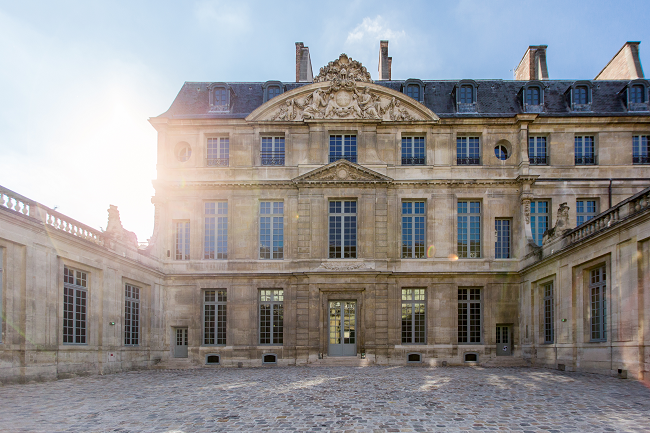
Are you an art enthusiast looking to delve into the world of Picasso’s extraordinary artistic genius? Look no further than the Picasso Museum in Paris, a treasure trove of the legendary Spanish painter’s works. Here are 10 compelling reasons why this museum deserves a top spot on your Parisian itinerary.
1. The largest collection of Picasso’s works in the world
The Musée Picasso-Paris collection comprises over 5,000 works and tens of thousands of archived pieces. For its quality and scope as well as the range of art forms it encompasses, this collection is the only one in the world to present both Picasso’s complete painted, sculpted, engraved and illustrated œuvre and a precise record – through sketches, studies, drafts, notebooks, etchings in various stages, photographs, illustrated books, films and documents – of the artist’s creative process.
The large collection contains masterpieces of the 20th century. From his Self-Portrait and La Celestina of his blue period until The Kiss, Large Nudes, Matadors and Musicians of his final years, you can find representations of all Picasso’s periods.

Celebration Picasso © Vinciane Lebrun/Voyez-Vous
2. The Hôtel Salé
The hôtel Salé is probably, as Bruno Foucart wrote in 1985, “the grandest, most extraordinary, if not the most extravagant, of the grand Parisian houses of the 17th century”. The building has seen many occupants come and go over the centuries. However, paradoxically, before the place was entrusted to the museum, it was rarely “inhabited”, but instead leased out to various private individuals, prestigious hosts and institutions.

The Hôtel Salé © Chloé Vollmer-Lo/Voyez-Vous
3. The great staircase and the Jupiter salon
The central staircase is the masterpiece of the house and has just been entirely restored to its original condition. It is based on the stair plan designed by Michelangelo for the Laurentian Library in Florence. Combining multiple effects of perspective and high-angle views, the staircase resembles a theatre. It leads to the “Jupiter salon”, a loggia with superb classified stucco and stone décor.

4. Giacometti Furnishings
The Musée Picasso-Paris owns an exceptional collection of 50 pieces of furniture created exclusively by Diego Giacometti – Alberto’s younger brother – for the Hôtel Salé. These works testify to the delicacy of Diego Giacometti’s world, where the purity of Greek line can be seen in the design of the tables, benches and chairs, or the touching presence of nature, in the tulips and foliage surrounding the bulbs of the light fittings, or the two little owls resting on the metal branches of a bronze lantern.
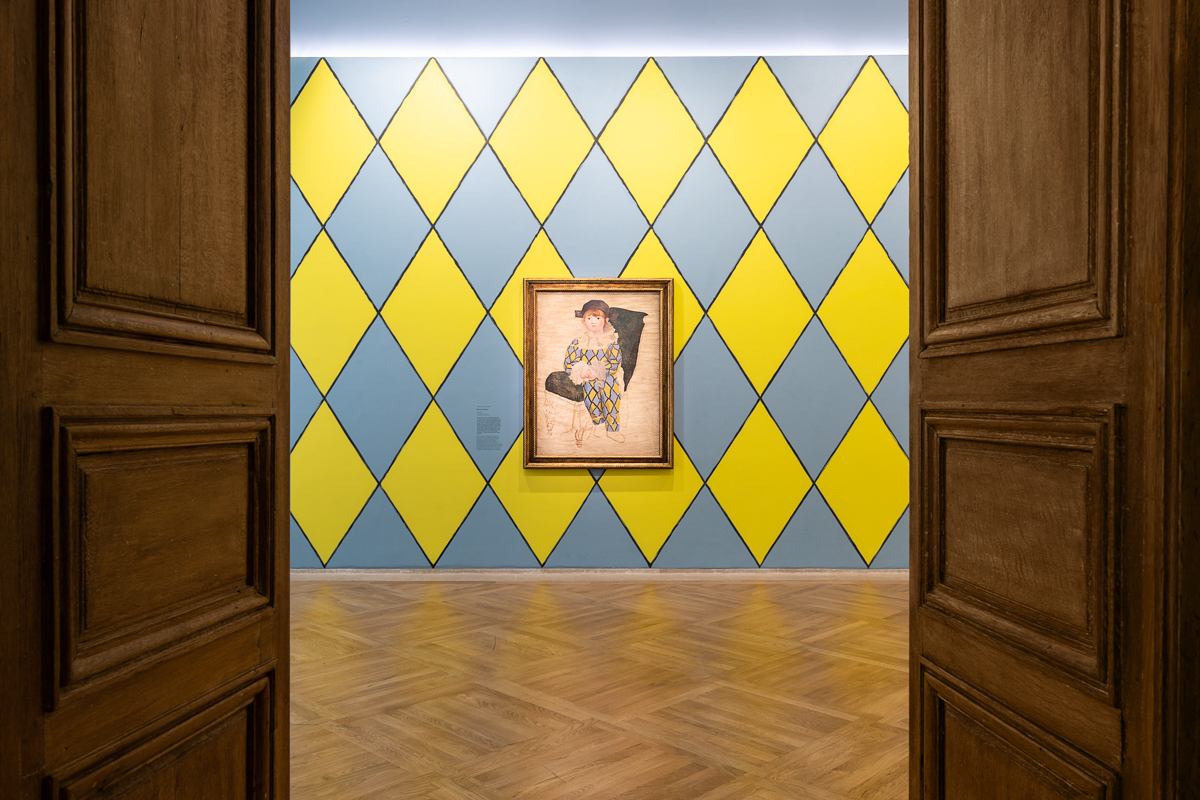
© Vinciane Lebrun/Voyez-Vous
5. Celebration Picasso: 1973-2023
2023 marks the fiftieth anniversary of Pablo Picasso’s death and thus places the year under the sign of the celebration of his work in France, Spain and internationally. To celebrate Picasso’s legacy today is a way to question what this major work for Western modernity represents today. It is to show its living, accessible and current part.
The Picasso Celebration 1973-2023 is structured around some fifty exhibitions and events to be held in renowned cultural institutions in Europe and North America, which, together, thanks to new interpretations and approaches, will make it possible to review the state of studies and understanding of Picasso’s work.

6. Paul Smith’s scenography of the exhibition “Celebration Picasso: The Collection in a New Light”
It is fifty years since Pablo Picasso died, on 8 April 1973 at Notre-Dame-de-Vie, his home in Mougins. The body of work that he left behind had a profound impact on the entire 20th century. For this anniversary year, the Musée National Picasso-Paris has invited the British designer Sir Paul Smith, known for his work with colour, tailoring and unexpected details, to lead the artistic direction of an exceptional exhibition showcasing the museum’s collection. This exhibition created in collaboration with Sir Paul Smith is curated around masterpieces from the collection.
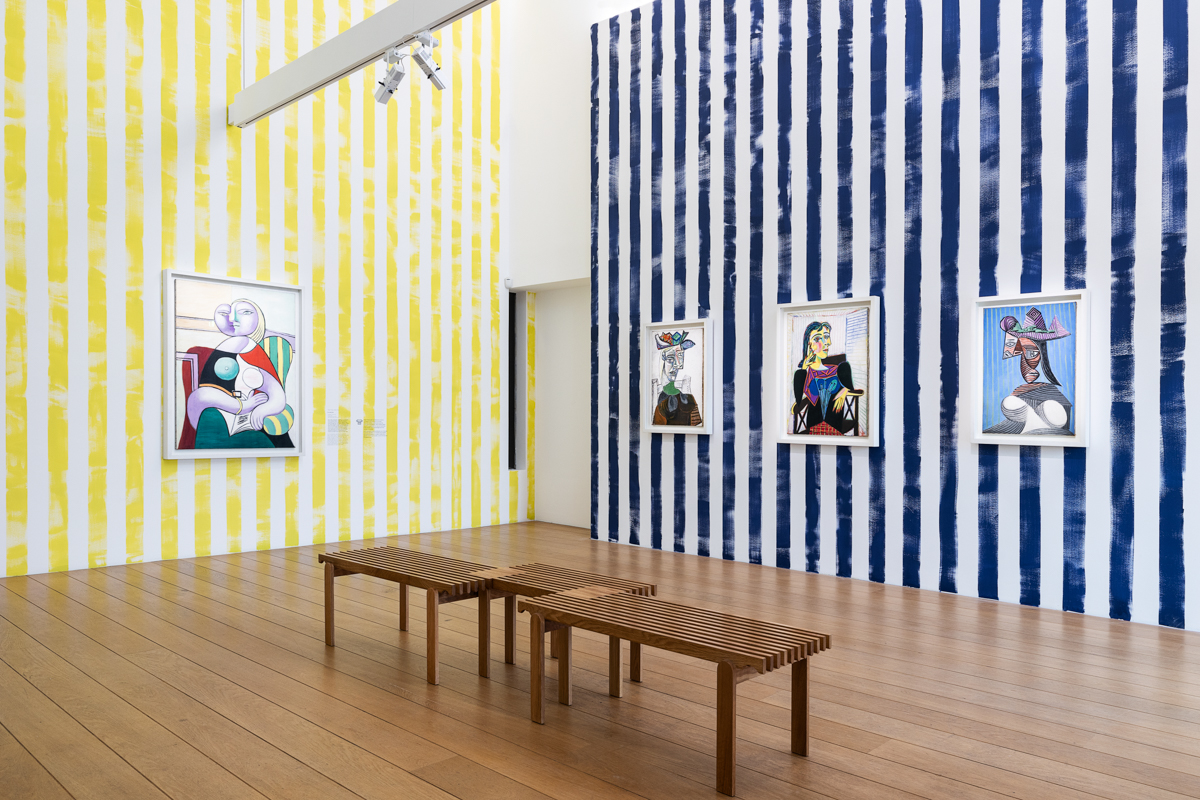
Paul Smith’s colourful direction brings Picasso’s work to light © Vinciane Lebrun/Voyez-Vous
7. Activity Booklets for kids
Our booklet will guide younger visitors through the exhibition “Celebration Picasso: The Collection in a New Light”, punctuating their journey with games, riddles and content allowing them to find out more about Pablo Picasso. The booklet is available in French and in English.
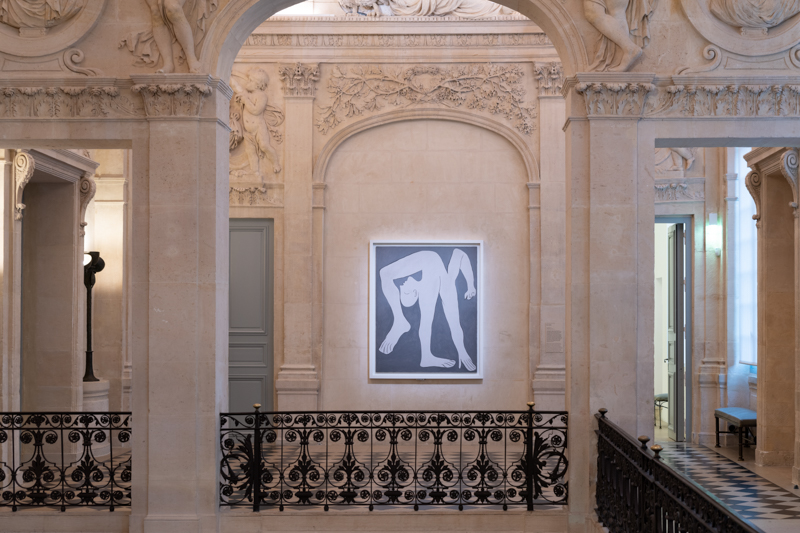
8. The Rooftop Café
The museum’s Café sur le toit offers you the opportunity to extend your visit with a sweet break at any time of the day, according to the museum’s opening times. You can sit inside or on the terrace, a magnificent rooftop in the Marais district, where you can enjoy a ‘suspended’ break in the heart of Paris with a view of the sumptuous façade of the Hôtel Salé.
View this post on Instagram A post shared by @milenabessonova
9. The Garden
The garden is located behind the Hôtel Salé and is particularly pleasant during the summer months. It offers a very beautiful 900m² area and provides a breathtaking view over the museum.

The Picasso Museum seen from the gardens © Takashi Images / shutterstock
10. The Marais district
The Marais district is a place not to be missed in Paris. Located in the heart of the city, it is one of the very rare districts to be appreciated by tourists as well as by Parisians. Spread over the 3rd and 4th arrondissements, it is bounded by the places de la République in the North, of the Bastille in the East and of l’Hôtel de Ville in the West. A historic district of the city of Paris, it is rich in numerous cultural treasures and is an exceptional witness to the aristocratic Parisian architecture of the 17th and 18th centuries, but also to the industrial activity of the 19th and 20th centuries.
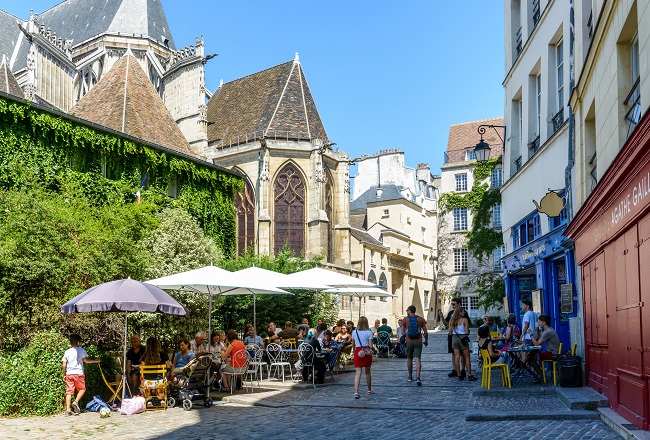
Café culture and cobbled streets in the Maris © olrat / shutterstock
Lead photo credit : © Vinciane Lebrun/Voyez-Vou
Share to: Facebook Twitter LinkedIn Email
More in French art , museums in France , Picasso , Picasso museum
Related Articles
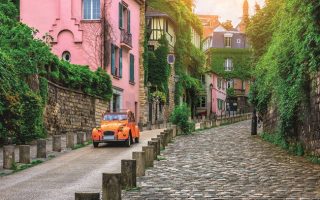
How (Not) to Be Parisian: Driving Through the City
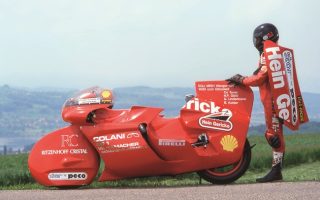
Match: Design & Sport, an Exciting Exhibition in Paris

Watch Over 10 Movies in 10 Days with Alliance Française’s Francophone Film Festival
By france today editors, leave a reply.
Your email address will not be published. Required fields are marked *
Important Cookie Information
We collect information from our users – this is for administration and contact purposes in connection with contributions you may wish to make to the site or your use of certain site features such as newsletter subscriptions and property enquiries.
Your Paris Tour Guide: The Picasso Museum
Pablo Picasso is an institution. He is recognised throughout the world as a leader in Modern-Art. Though not the most agreeable of humans, his work still holds historical importance in the evolution of artistic expression. Fortunately for the French, the Paris Picasso Museum has one of the world's largest collections of the artist's work. In this article, we will take a brief look at Picasso's career, examine the history behind the Museum, and help you make the most of your visit.
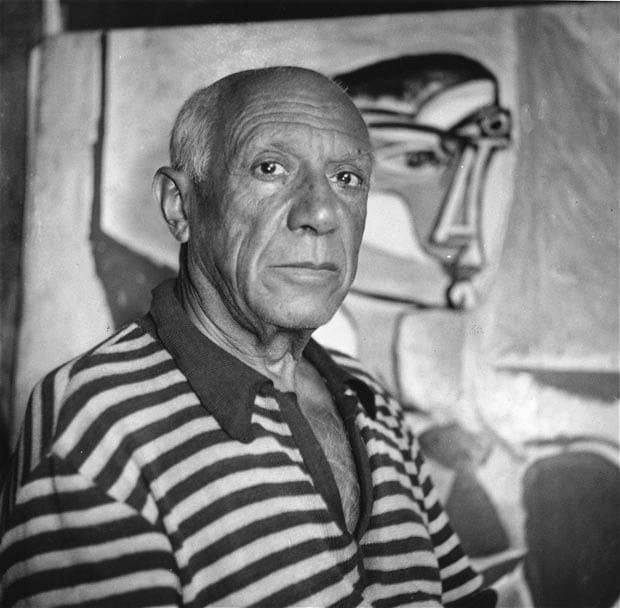
Who was Pablo Picasso?
Pablo Picasso is credited as being one of the founders of the Cubist art movement. He was a Spanish painter, sculptor, and printmaker. Picasso died at the amazing age of 91, in 1973, leaving behind thousands of works of art.
Changes in his style and influences are evident over the years. As a result, art historians divide his career into 'periods'. We won't go into detail about Picasso's different periods in this article. However, it is important to note that his first influences weren't modern at all.
In the beginning, Picasso was influenced by Neo-classism and Renaissance painters. During his first trip to Paris, he met many of the leading modern artists in Montmartre. It would change the course of his life forever. As a result, both his artistic style flourished and evolved. Most of Picasso's life would be spent in France.

photo by LPLT
Picasso Museum Paris
Free Entry with the Paris Pass!
After Picasso's death in 1973, his family donated many paintings to the French state. A French law called the 'dation' was passed in 1968. The law was created so that donations could be made instead of paying taxes. In other words, Picasso's family saved a lot of money by donating the paintings. Also, Picasso himself left his own private collection to the French. In short, it seemed fitting that many of the pieces remained in France.
The decision was made to house the Picasso collection at the Hôtel Salé after the artist's death in 1973. The Museum obtained a 99-year lease for the building because it is owned by the city of Paris. Also, it was classified as a historic monument in 1968, making the structure's history is equally as interesting as its current purpose. Originally, it was designed by architect Jean Boullier and construction took place 1656-1660. The over the top architectural style was influenced by Cardinal Mazarin. Italian Baroque was in.
Renovations took place from 1979-1985 to prepare for the Museum opening. While they wanted to keep the original spirit of the building, modern updates were needed. Architect Roland Simounet, internationally known for blending modern and historic spaces, was chosen to lead the project.
Some Things are Worth the Wait
Starting in 2009, the Paris Picasso Museum was closed for an astounding five years due to renovations. The dates kept getting pushed back, as it was only supposed to take two years to complete. Consequently, the original project estimate doubled and ended up costing a total of 52 million euros.
Firstly, the goal of the project was to increase space within the building. At the time, only a part of the art in the collection could be displayed. The French architect, Jean-François Bodin's, work was cut out for him. He doubled the exhibition space by changing the arrangement of the museum. Also, the administrative offices were moved offsite. But, as the project grew in scope, so did the delays.
The Picasso Museum in Paris reopened in 2014. The objective of the renovations and restorations was a success, and Museum attendance doubled as a result.
In an effort to raise more funds for the project, the former Director of the Picasso Museum organized touring exhibitions across the globe. A total of 31 million euros was raised!
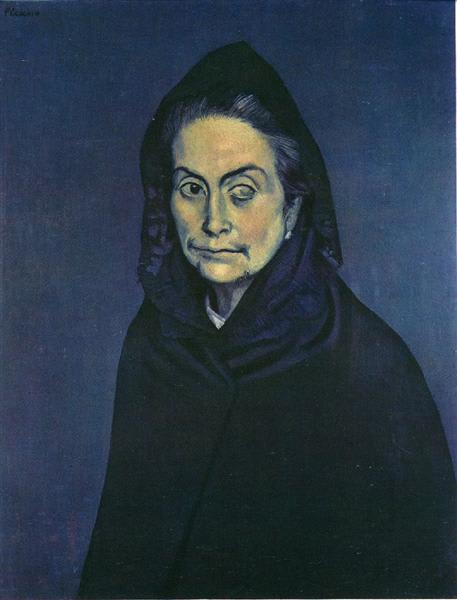
The Collection
The Paris Picasso Museum has over 5,000 works in its collection. Some of the pieces were donated by Picasso's heirs and friends, while others were bought by the Museum itself. Included in Picasso's own collection, are works by artists such as Modigliani, Matisse, Cézanne, Renoir, Degas, etc. The collection comprises paintings, sculptures, ceramics, illustrations, prints and engravings. In addition, the Museum possesses Giacometti furniture and they have over 11,000 documents in their library.
Your Visit to the Picasso Museum
Whether you love him or hate him, Picasso's visionary talent is undeniable. Why not start your Parisian morning in the historic Marais quarter with a visit to the Picasso Museum ?
Address: 5 Rue de Thorigny, 75003, PARIS
Hours of Operation:
Monday- CLOSED Tuesday – Friday: 10.30 a.m – 6:00 p.m. Saturdays and Sundays : 9.30 a.m. – 6:00 p.m.
Ticket price: 14€
*The audio-guide costs 5€.
Buy with confidence
Free cancellation.
Plans can change, we get it. All non-activated passes are eligible for a refund within 90 days of your purchase date.
Got a question?
Check out our FAQs or live chat with our customer service agents now
The Paris Pass® is highly rated, but don't just take our word for it!
Have a 5% discount, on us.
More savings? You're welcome. Sign up to our newsletter and receive exclusive discounts, vacation inspiration and much more.
- Thick check Icon By signing up, you agree to receiving email updates in accordance with The Paris Pass privacy policy . We do not sell your personal data.

The Picasso Museum (Musée Picasso) in Paris
Heads up, art lovers! Tucked away in a grand Parisian mansion from the 17th century, the Picasso Museum is an absolute gem for anyone itching to dive deep into the mesmerizing world of one of the 20th century’s most iconic artists.
So, let’s set sail on this artistic journey!
💡 The Captain’s tips 💡
🧐 Keen to delve into Paris’ rich history? Captain Ulysses suggests checking out this complimentary guided tour of the city . You decide how much to tip the guide!
💤 Searching for the perfect stay in Paris? Take a peek at Captain’s picks for the best places to stay: Where to stay in Paris? Tips & Recommendations.
👶 Planning a family adventure to Paris? Discover all of the Captain’s top tips in the article: Exploring Paris with the Kids: Family-Friendly Activities
A Bit of History
A glimpse into picasso’s life.
When you think of groundbreaking art from the 20th century, Picasso’s name inevitably pops up.
A trailblazer of Cubism alongside Georges Braque, Picasso’s revolutionary approach—drawing inspiration from African art—saw him break down objects into geometric forms, presenting a multi-angled view of reality. His masterpiece, “Les Demoiselles d’Avignon”, epitomizes this dramatic shift from traditional art.
But Picasso wasn’t just a one-trick pony. Over his illustrious career, he dabbled in a myriad of artistic movements, from symbolism and fauvism to surrealism.
His art also mirrored the tumultuous times he lived in, with pieces like “Guernica” capturing the horrors of the Spanish Civil War in the 1930s.
More than just an artist, Picasso’s relentless evolution and reinvention cemented his status as a titan of his era.

The Picasso Museum in Paris: A Brief Overview
Nestled in the heart of the historic Marais district, the Picasso Museum calls the Hôtel Salé its home. This opulent mansion, built in the 17th century by Pierre Aubert de Fontenay (a tax collector on salt, hence the name “Salé”),
has worn many hats over the centuries: from the Venice Embassy to an art school. Acquired by the city of Paris in the 1960s, it was designated a Historic Monument.
Upon Picasso’s passing in 1973, the French State became the custodian of a treasure trove of his artworks. The Hôtel Salé was chosen to showcase this vast collection,
and after a major facelift, the Picasso Museum threw open its doors in 1985. Today, it’s more than just a museum—it’s a hub for research, study, and dialogue centered around the legendary Spaniard’s work. The museum stands as a heartfelt nod to Picasso, underscoring his monumental impact on French culture.
🎨 Picasso & Paris: A Love Affair 🎨
Picasso’s life and art are deeply intertwined with Paris.
From the moment he set foot in the French capital in 1900, he was smitten.
Montmartre, with its bohemian vibe, left an indelible mark on him. The friendships he forged and the haunts he frequented there deeply influenced his work. Paris reciprocated this love, forever cherishing Picasso as the most Parisian of Spanish artists.
A Guide to the Picasso Museum in Paris
Nestled in the historic Marais district, the Picasso Museum is a must-visit for art aficionados. Ready for a deep dive into the world of one of the 20th century’s most celebrated artists?
Let’s go!
The Hôtel Salé
The museum’s residence, the Hôtel Salé, is a stunning mansion commissioned by Pierre Aubert in the mid-17th century.
Fresh off a revamp, this building seamlessly blends old-world charm with contemporary flair. Its majestic entrance on rue de Thorigny is a sight to behold, as is the garden-facing facade.
And don’t even get Captain Ulysses started on the grand staircase—it’s a showstopper with its exquisite wrought iron railing.

The Artworks
Boasting over 5,000 artworks and a whopping 200,000 archive pieces, this museum is home to the world’s most extensive Picasso collection. From paintings and sculptures to sketches and ceramics, it’s a comprehensive showcase of the maestro’s genius.
And it’s not just Picasso’s creations on display—you’ll also find pieces from his personal collection, featuring works by legends like Matisse, Miró, and Cézanne.
Temporary Exhibitions
Since its grand reopening in 2014, the Picasso Museum has been buzzing with activity. With its ambitious temporary exhibitions and a slew of events, it offers fresh perspectives on Picasso’s legacy.

Practical Information
Getting to the picasso museum.
Located at 5 rue de Thorigny in the heart of the Marais,
the Picasso Museum is quite easy to get to:
- Metro: Line 1 (Saint-Paul Stop), Line 8 (Saint-Sébastien Froissart and Chemin Vert Stops).
- Bus: 29, 96, 75, 69, 76, 67, 72

Operating Hours of the Musée Picasso
Open for business every day except Mondays:
- Tuesdays to Fridays: 10:30 am to 6 pm
- Weekends and public holidays: 9:30 am to 6 pm
Note: The museum takes a break on January 1st, May 1st, and December 25th.
Ticket Pricing
Adult tickets are priced at €14, while discounted tickets come in at €11. Admission is free for those under 18 and for all visitors on the first Sunday of each month.
Fast-Track Tickets to the Picasso Museum
Tired of twiddling your thumbs in long queues? Captain Ulysse has got your back! He suggests snagging your tickets online beforehand (without any pesky extra fees): fast-track tickets to the Picasso Museum .
👉 Skip the lines: book your tickets and tours in advance!
👉 looking for a place to stay in paris, 👉 looking for advice and recommendations here are all of captain ulysses’ suggestions.
🛏️ Accommodation : Booking . For all the Captain’s advice and recommendations: Where to stay in Paris?
🎟️ Activities: GetYourGuide | Civitatis
⛵ Cruises: Seine River Cruises
🎫 Citypass: Paris Museum Pass
🚐 Transfers: Transfer to/from your hotel
🚌 Local Transportation: Hop-on Hop-off Bus | Batobus
✈️ Flights, Trains & Buses: Skyscanner
How useful was this post?
Click on a star to rate it!
Average rating 0 / 5. Vote count: 0
No votes so far! Be the first to rate this post.
As you found this post useful...
Follow us on social media!
Related posts

Shakespeare’s Globe in London

Street Art In The 13th Arrondissement Of Paris

Where to eat in Bruges? The Captain’s top recommendations
Leave a reply cancel reply.
Your email address will not be published. Required fields are marked *
Save my name, email, and website in this browser for the next time I comment.
Privacy Overview

Visiting the Picasso Museum in Paris | All you need to know
Things to do in Paris Paris Attractions Museums in Paris Picasso Museum
Pablo Picasso is a Spanish painter, an acclaimed sculptor and an influential artist of the 20th century. Owing to his great body of work and an eclectic style, it is said that no painter before him has had an enthusiastic mass audience in their lifetime. Born in Spain, Picasso spent his adult life, or rather his painting heydays in France. Painting ran in his family, and by the age of fourteen, Picasso had already carved a place for himself. During his long career, he painted approximately thirteen thousand paintings for the world to appreciate. But no matter what he painted, sculpted or created, he was always able to capture the true essence of the subject. It was his persistent zeal and intellectual approach that made him a master of the ages during his own life and even decades after.
Picasso Museum Paris - In a Nutshell
Handy information.
Les Demoiselles d'Avignon Guernica Massacre In Korea The Old Guitarist The Weeping Woman
Things to know
Number of visitors per year: 7,00,000 No. Of Art Pieces: 5000 Established: 1985 Architect: Roland Simounet, Erik Dhont
Opening Hours And Address
Tuesday - Friday : 10:30 AM - 6 PM Saturday, Sunday and public holidays : 9:30 AM - 6 PM 5 Rue de Thorigny, 75003 Paris, France Get there
Why Should You Visit The Picasso Museum?
Apart from Picasso’s personal collection, the museum hosts an extensive collection of masterpieces designed by old and contemporary renowned artists. There is an outstanding collection of Giacometti’s Greek furniture, a unique ensemble of paintings and sculptures, an exceptional series of exotic prints and engravings along with some 100 books illustrated by Pablo Picasso. His large cubist painting Man with Guitar is also on display at the museum. Imagine, an entire floor dedicated to Picasso’s own art collection. It includes, paintings like Cézanne’s Bathers and L’Estaque , Renoirs . Artistic wonders by Modigliani, Matisse, and drawings by Degas, Chirico to name a few are also represented in Musee Picasso.
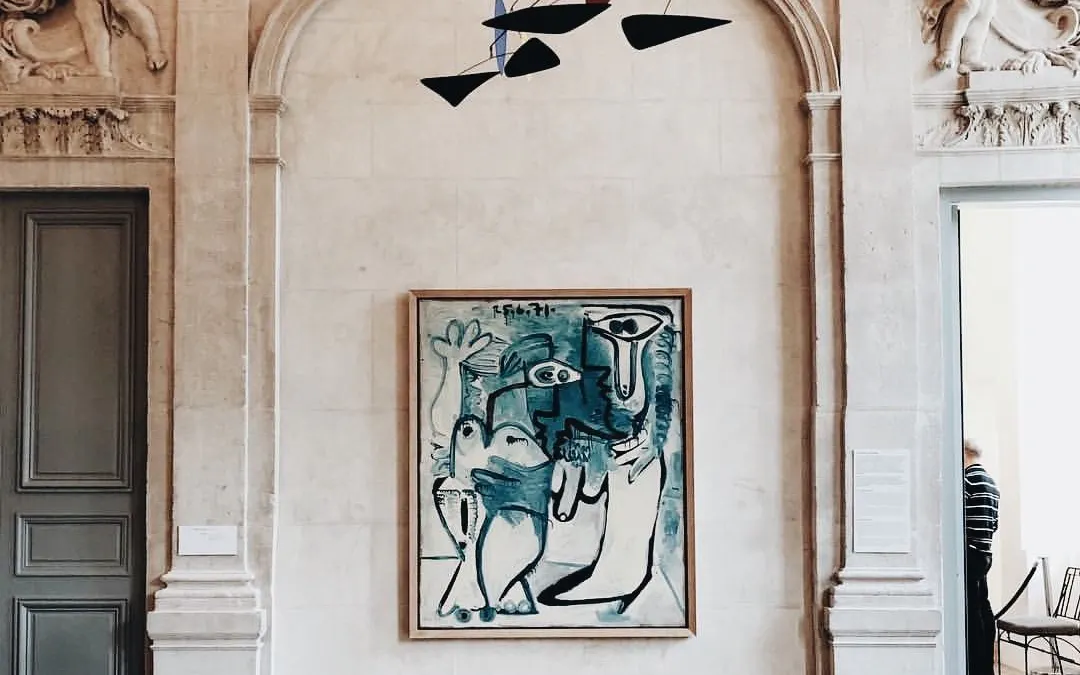
All the work is well labelled, along with a handy a booklet guide to help you get around the massive five floors. This masterpiece of a museum is a fast forward like journey through the history of the 20th Century. 300 rich paintings, close to 250 three-dimensional sculptures, photographic archives of 17000 documents, written archives of 10,000 self penned documents; and many other items of Pablo Picasso’s creative life can be found here, thus making it a must-visit for every art lover.
Where Can I Get Tickets to the Picasso Museum Paris?
Depending on your preferences, your itinerary may vary. Hence it is important to plan ahead, skip the lines and book the best experience.
You may choose to book one of Headout's pre-planned tours , crafted combining the best experiences including the Picasso Museum in a package or book your Picasso Museum tickets individually on the Headout app for just €14.
Top 10 Artworks to See Inside the Picasso Museum Paris
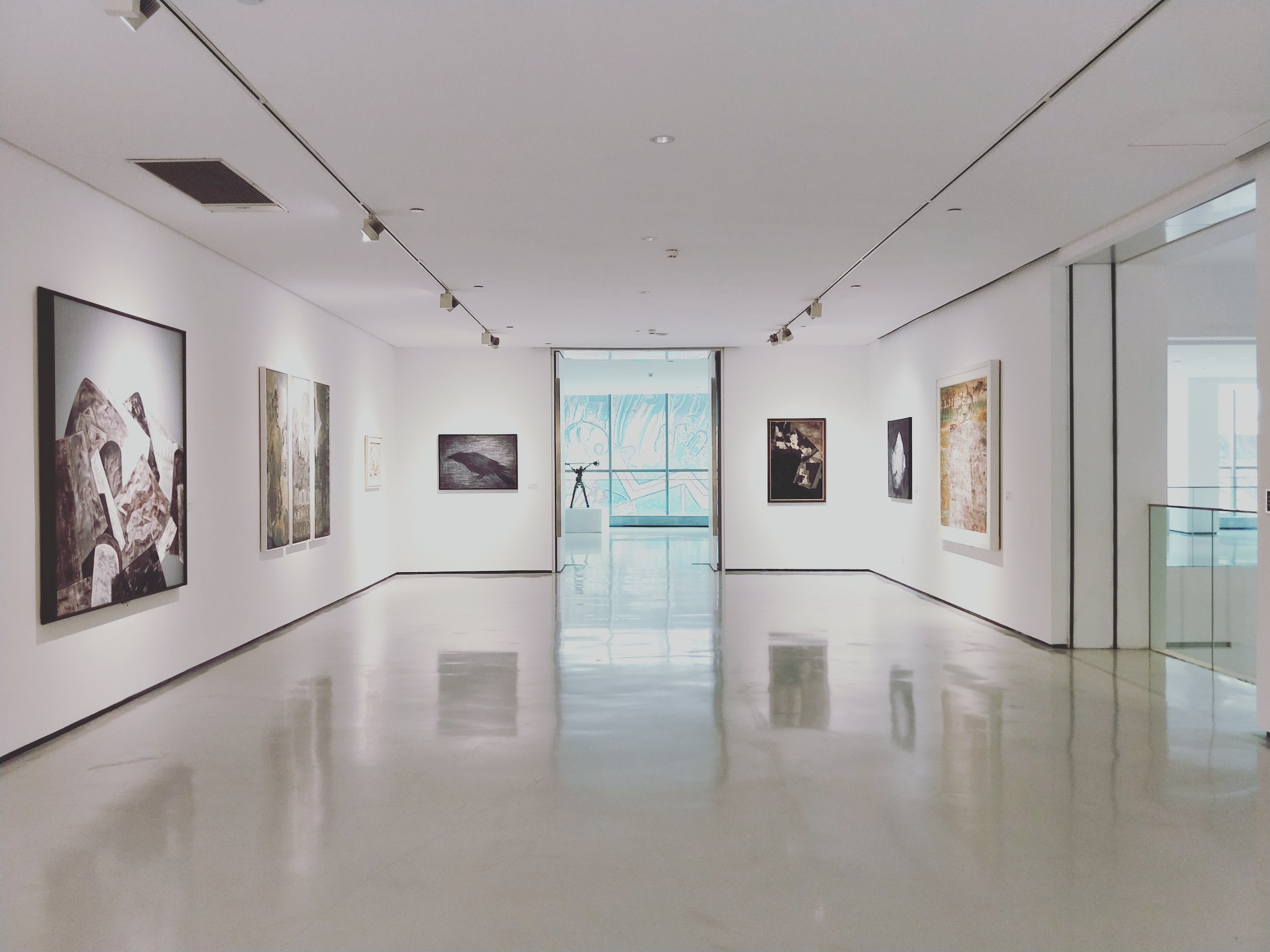
This painting is a still life, with Picasso's unique twist. The objects in the painting are arranged in an abstract way, and the chair is upholstered with actual cane.
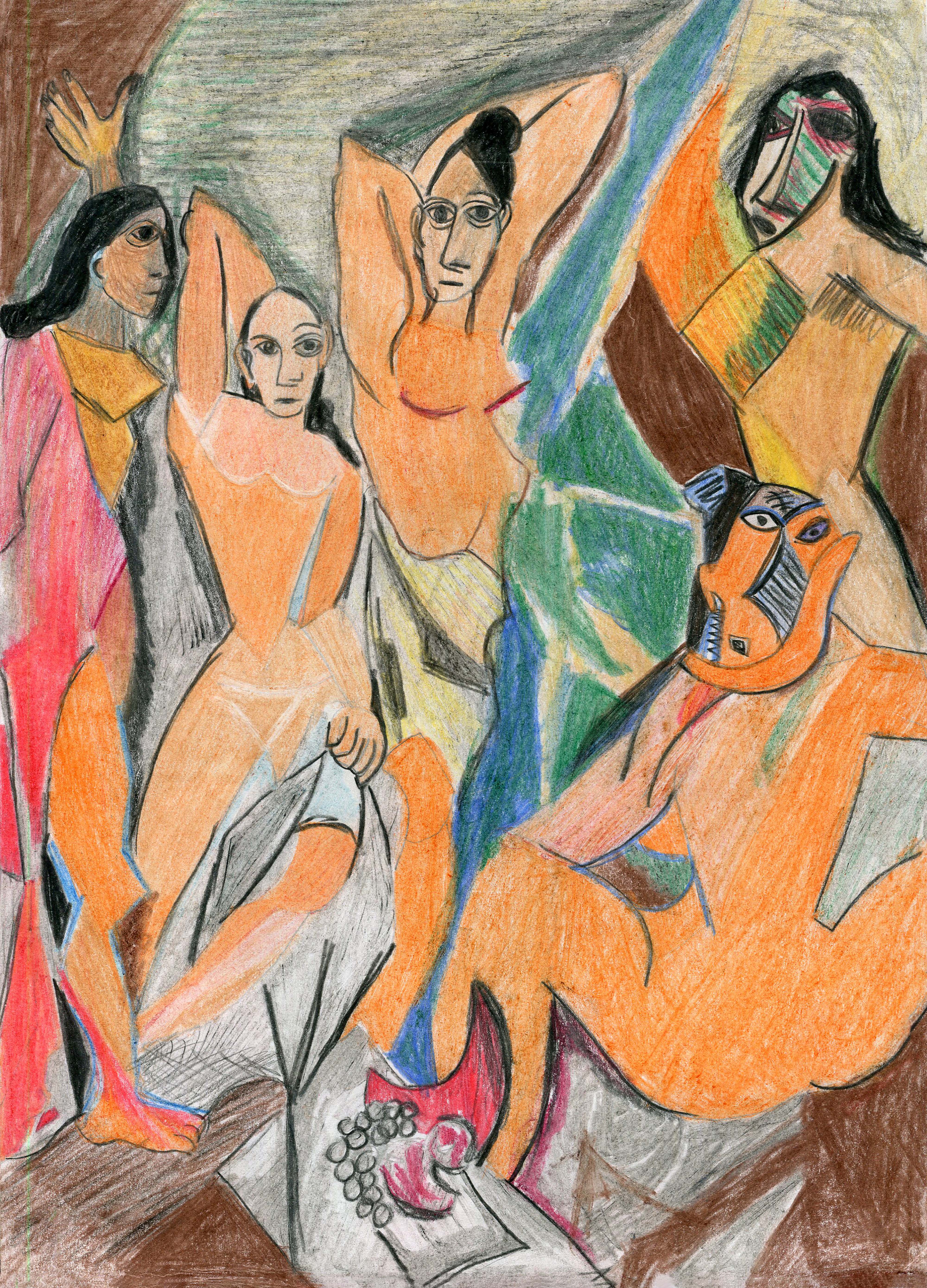
This painting is considered to be one of Picasso's most important works. It depicts five nude women with disconcerting facial features.
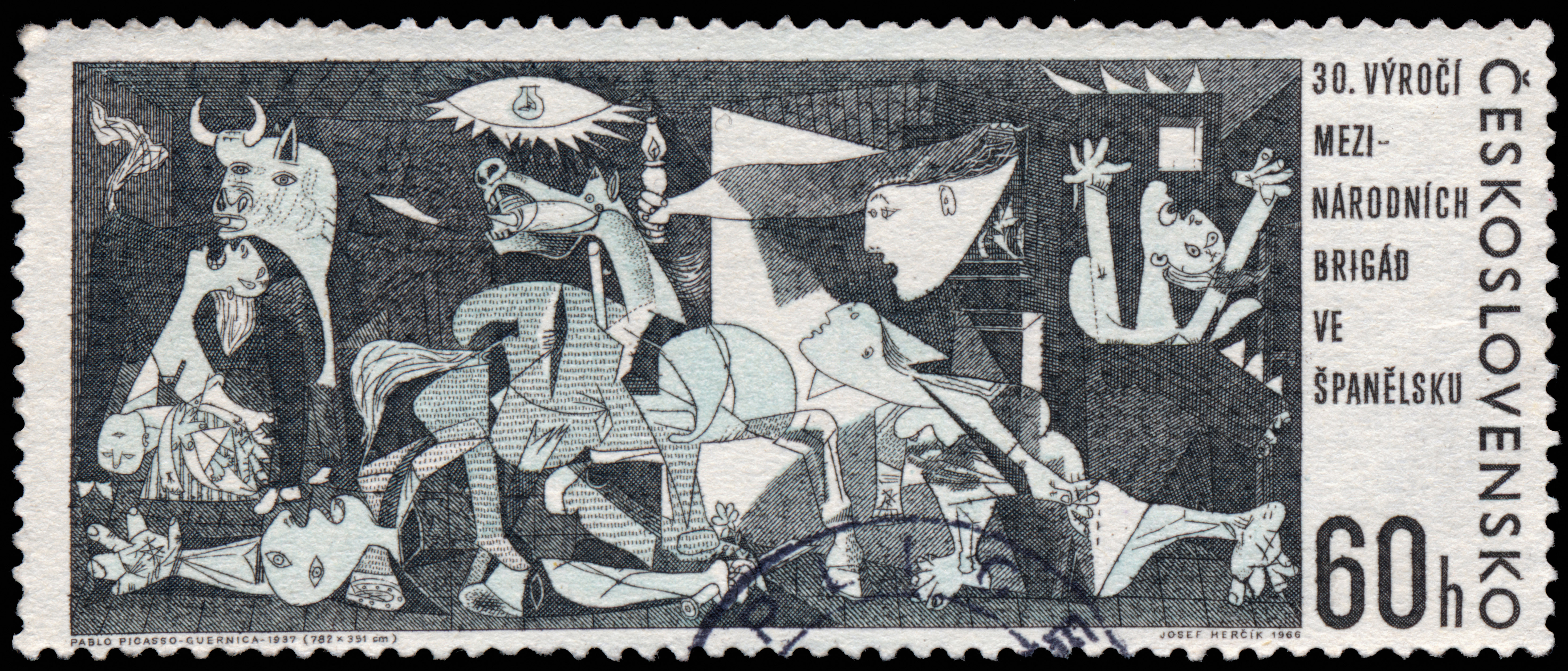
This painting was Picasso's response to the bombing of Guernica during the Spanish Civil War. It is a large and powerful work that conveys the horrors of war.
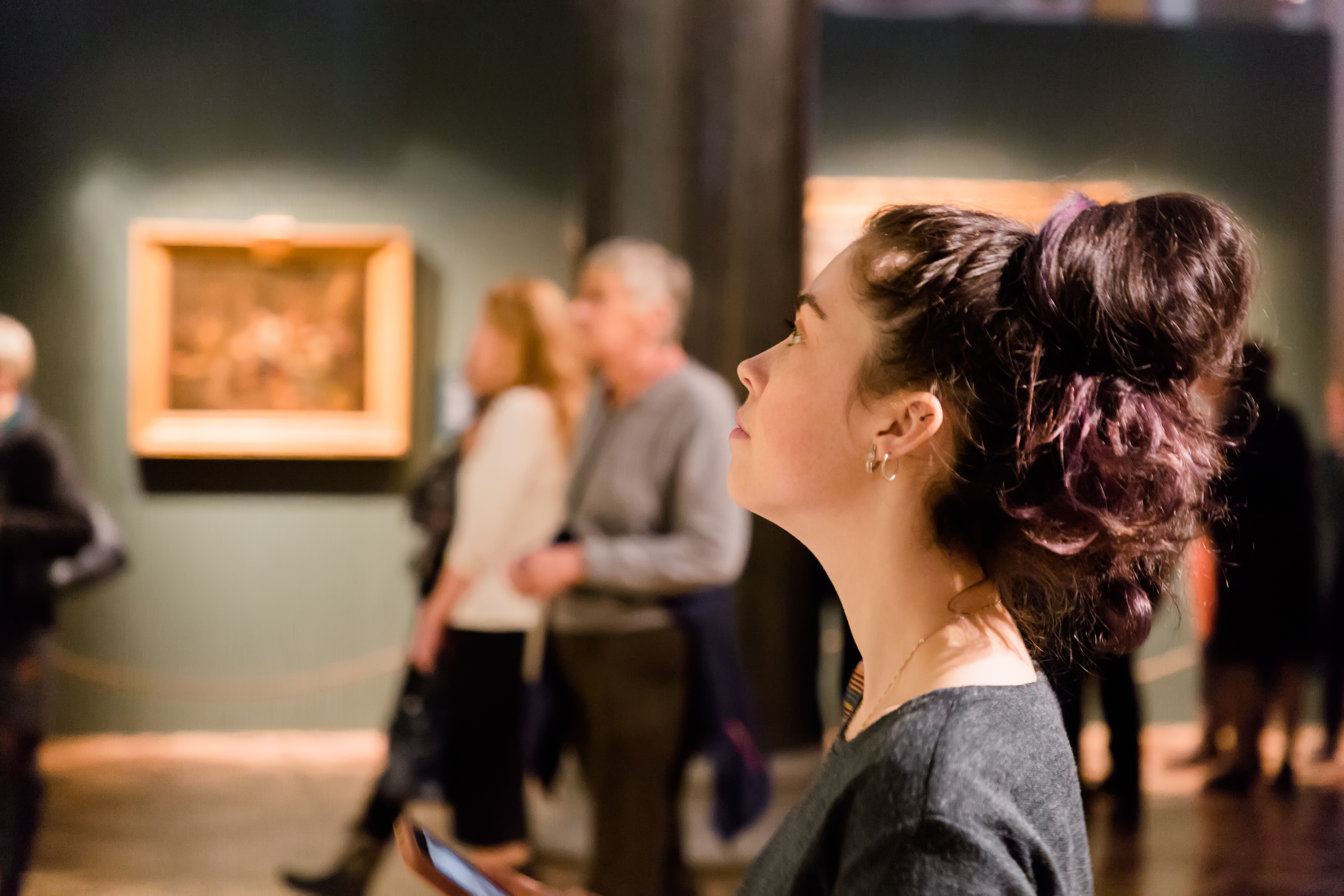
This is one of Picasso's interesting cubism painting known as the Massacre in Korea. This piece talks about the mass killing during the Korean War in the Cold War.

This painting is from Picasso's Blue Period. It shows a blind, poor musician playing his guitar.

This painting depicts Picasso's mistress, Dora Maar, seated on a chair with a cat in her lap.

This painting is a portrait of Picasso's mistress, Dora Maar, in agony. Her face is distorted in grief.
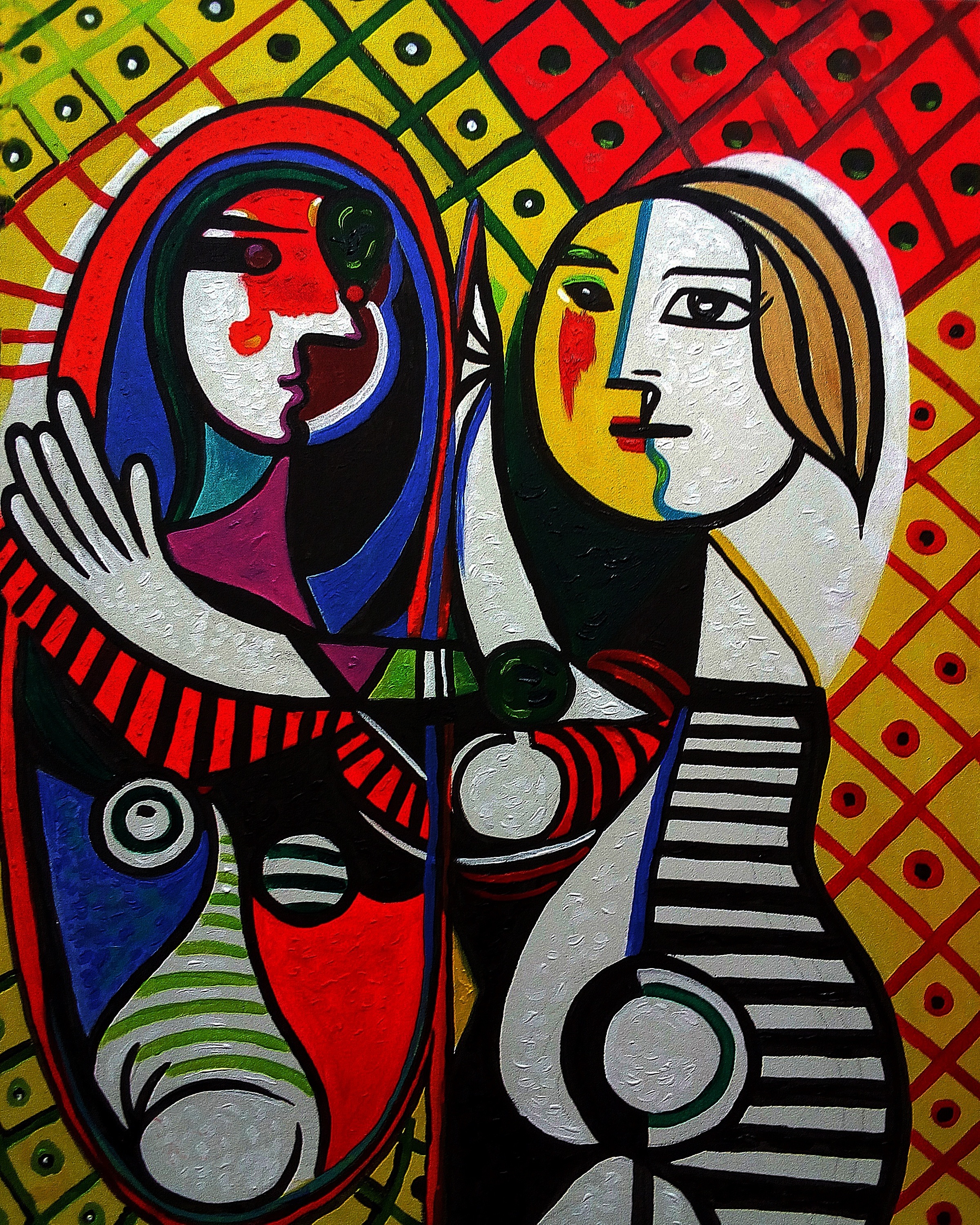
This painting is a self-portrait of Picasso's mistress, Marie-Thérèse Walter. She is shown looking at herself in a mirror.
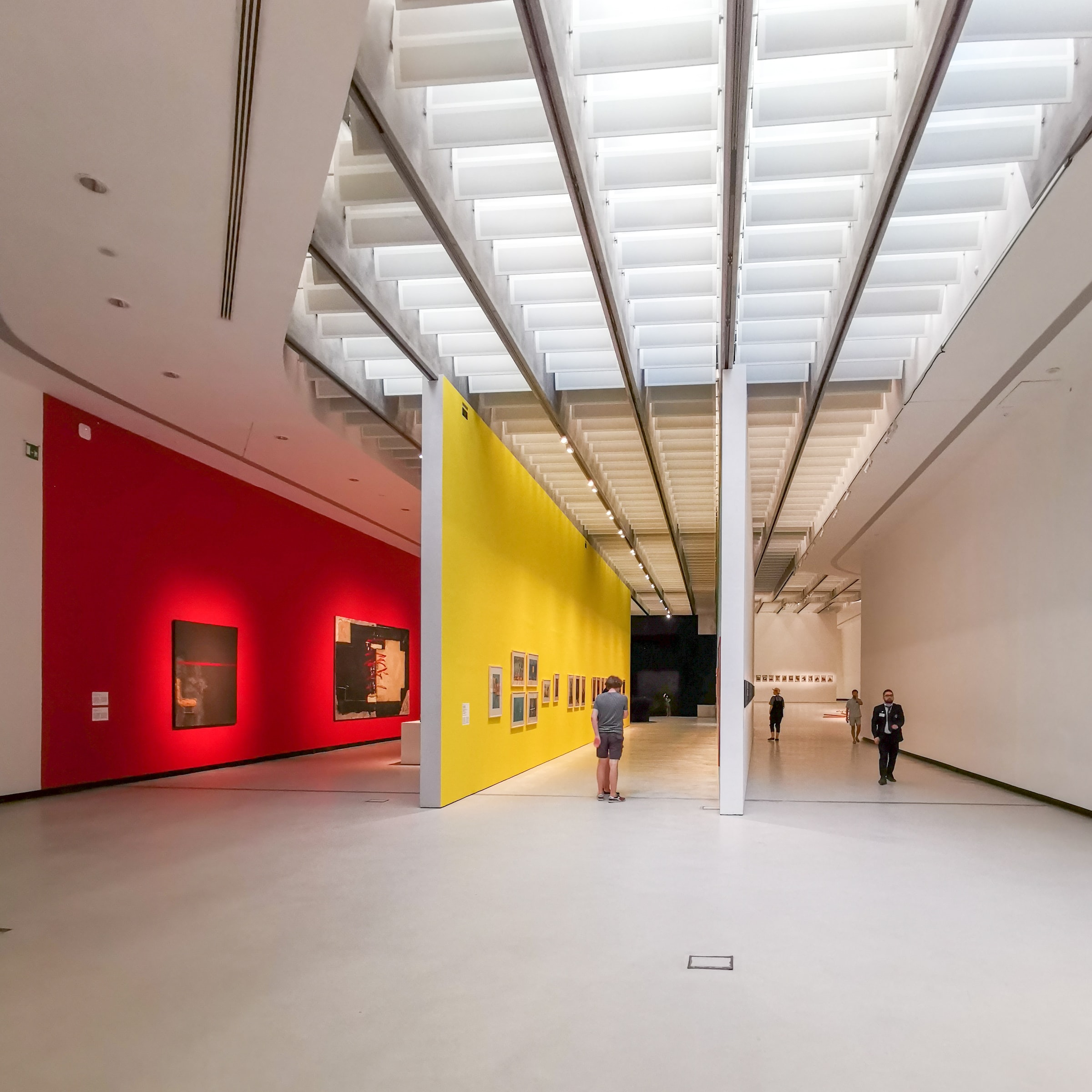
This painting is a portrait of Picasso's friend, the artist Juan Gris. He is shown smoking a pipe and wearing a beret.
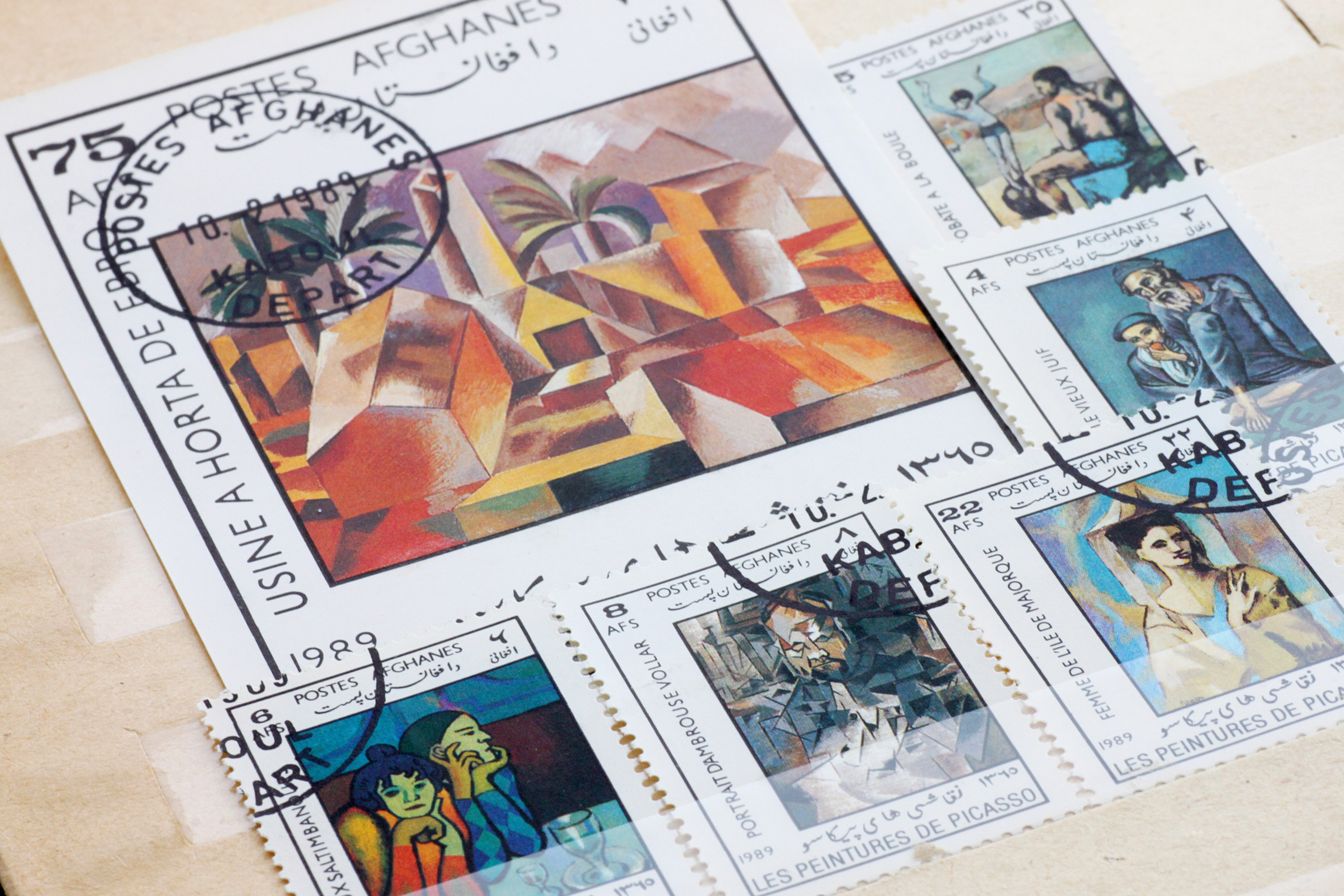
His largest sculpture during that time was the ‘The woman in the garden’. The intriguing factor about this metal sculpture is that it, wherever you look at it from is the right place to be looking at it.
Plan Your Visit
Tuesday - Friday : 10:30 AM - 6 PM Saturdays and Sundays : 9:30 AM - 6 PM Last admission is at 5:15 PM. The museum remains closed on Mondays, December 25, January 1 and May 1. On December 24 and December 31, the museum is open from 9:30 AM - 5 PM.
Getting There
Picasso Museum is located on 5 Rue de Thorigny in Paris. You have the following public transport options available to get to the museum: Subway - Line 1 of the metro to Saint-Paul Station or Line 8 of St. Sebastien-Froissart Station RER - Châtelet - Les Halles Bus - 20, 29, 65, 69, 75, 96

Public Transportation in Paris 101
Best time to visit picasso museum paris.
October to April are the best months to visit Picasso Museum Paris. The weather is milder and there are fewer crowds. You can also take advantage of cheaper flights and accommodation during these months. However, if you're looking to experience the city at its most festive, then December is the month to visit. Paris comes alive during Christmas with its twinkling lights, Christmas markets and festive atmosphere. If you don't mind braving the cold, then January and February can also be magical months to visit Paris. The city takes on a whole new character in winter with its cosy cafes and snowy streets. So whatever time of year you choose to visit Picasso Museum Paris, you're sure to have a memorable art-sy experience!
Insider Tips
Buy Tickets in Advance - Get a Paris Museum Pass or a timed-entry reservation to skip the line. This not only saves money but a lot of time. With this pass, you can also enjoy an unlimited number of visits to the museums included in the pack you pick. The Entrance ticket gives access to all exhibitions but does not include a guided visit. Arrive Early – Parisians love exploring the museum, thus it gets a tad bit noisy and crowded at times. It is always best to add the museum tour as a priority to visit in the morning. This way you get a peaceful and a much more intimate environment. Avoid Tuesday - With Mondays closed, Tuesdays are the busiest at the Museum. So you can buy tickets in advance online and skip the line, or arrive early to escape the crowd.
Picasso Museum Paris Reviews
The museum is a wonderful venue to see Picasso's work. The pieces are hung with enough space to appreciate them and there are some interesting sculptures dotted around as well as photos, letters and other artefacts. There is a small cafe with a great terrace where you can admire the decorative sphinxes. The staff are friendly and helpful. There is a fantastic shop opposite selling ceramics and other beautifully designed Picasso - themed items.
This museum has some very unique pictures and drawings that are rarely available anywhere. The collection is organized to provide a view of how Picasso developed his work around the events of his life. There are a lot of good examples of working from photographs, a good collection of blue period and cubism. There are also a few works of his contemporaries to show how art was being perceived at the time.
FAQs: Picasso Museum Paris
Is the picasso museum worth it.
Yes, the Picasso Museum is worth going. The collection might not be as extensive as at MOMA in New York, but the building is well worth seeing, and the admission fee is waived on Sundays.
Is the Picasso Museum free?
Yes, the Picasso Museum in Paris offers free admission: every Thursday afternoon from 6 pm to 9.30 pm. the first Sunday of every month from 9 am to 7 pm. and during the open days: February 12, May 18 and September 24.
How much does Picasso Museum cost?
General admission tickets includes access to the regular collection + any temporary exhibitions, which costs just €14 with Headout.
How long does the Picasso Museum take?
Ideally an hour.
Should I buy Picasso Museum tickets in advance?
Limited capacity: the sale of tickets can end prior to the closing of the museum if the tickets run out. So as to avoid not being able to get an admission ticket, we recommend that you buy it in advance.
See more Paris. Save more money.
Save €5 on your first booking with Headout when you use promo code GOPARIS
EXPLORE NOW
Sachin Kumar
Having lived and worked in Bangalore and Singapore before moving to Dubai, Sachin is one of the many expatriates who've come together over the years to knit the fabric of Dubai’s global culture. An avid urban explorer and photographer, he has spent countless hours uncovering hidden gems in these cities - eating in ramshackled establishments that only the cab drivers frequent, discovering underground markets, exploring abandoned buildings and staying with families that may or may not like him.

Be a smart traveler
The first to know about trending destinations, travel deals, tips and all things travel.


Where To See Picasso’s Art In Europe
Picassophiles unite! Here’s the ultimate guide to finding Picasso’s artwork and masterpieces in Europe.
This Europe travel guide takes you to all the Picasso themed museums in Europe — in France, Spain, Switzerland and Germany.
Pablo Ruiz Picasso was a revolutionary. His art is unparalleled in terms of quality, quality, and vitality.
With his countless innovations, most art historians consider Picasso the greatest artist of the 20th century. He certainly had plenty of genius and charisma, which fascinated both critics and admirers alike.
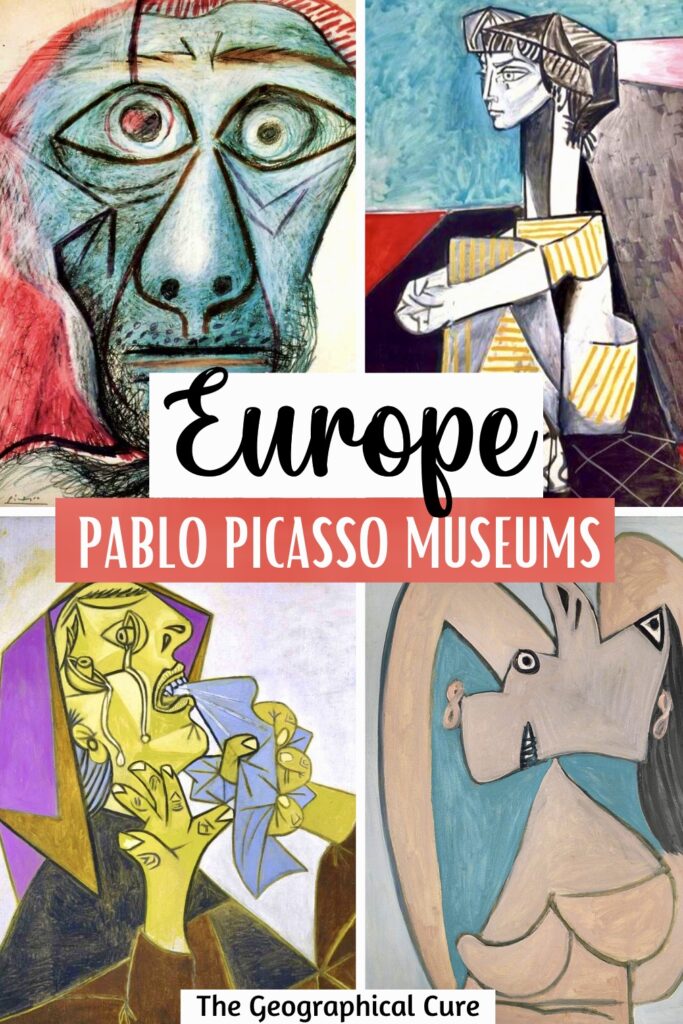
Born in Malaga, Picasso was a Spanish expat and co-founder of cubism. Picasso left an amazing legacy of over 50,00 art works.
Over his long life, from prodigy to icon, Picasso moved from Spain to Paris to the south of France . Every spot he called home claims him as a “native son,” with museums devoted to his artwork.
Picasso’s art was intimately intertwined with the tapestry of his personal life. His muses ranged from his children to his lovers and wives.
Through a series of enduring relationships, often accompanied by fleeting affairs, Picasso’s artistic inspiration seemed to ebb and flow with the dynamics of his love life.
To Picasso, love was not only a passion but also a wellspring of artistic rejuvenation. Despite his complex romantic history, it’s essential to acknowledge that Picasso’s reputation is multifaceted.
Beyond his reputation as a chronic womanizer, he was an artist of unparalleled diligence and boundless creative imagination.
There are 9 museums dedicated to Picasso or showcasing a significant collection of his works. For those with a love for art, these museums are veritable treasures, offering immersive experiences that capture the essence of Picasso’s genius.
Picasso Museums In Europe: Where To See Picasso’s Art
Let’s follow the Picasso Trail in Europe and discover all the places you can see Picasso’s art works.
1. Picasso Museum, Paris France
Nestled within the charming streets of the Marais neighborhood , Paris’ Picasso Museum is a true gem that beckons art enthusiasts. Set within the enchanting 17th-century Baroque Hotel Sale, the museum’s architectural beauty is as captivating as the treasures it holds.
Step into the Musée Picasso, and you’ll find yourself immersed in one of Paris’ most revered art collections. The museum’s opulent mansion is the perfect backdrop for the stunning array of artworks.
Boasting the distinction of being the largest public Picasso collection globally, it’s a haven for art aficionados and the best place to see Picasso’s art in Europe.
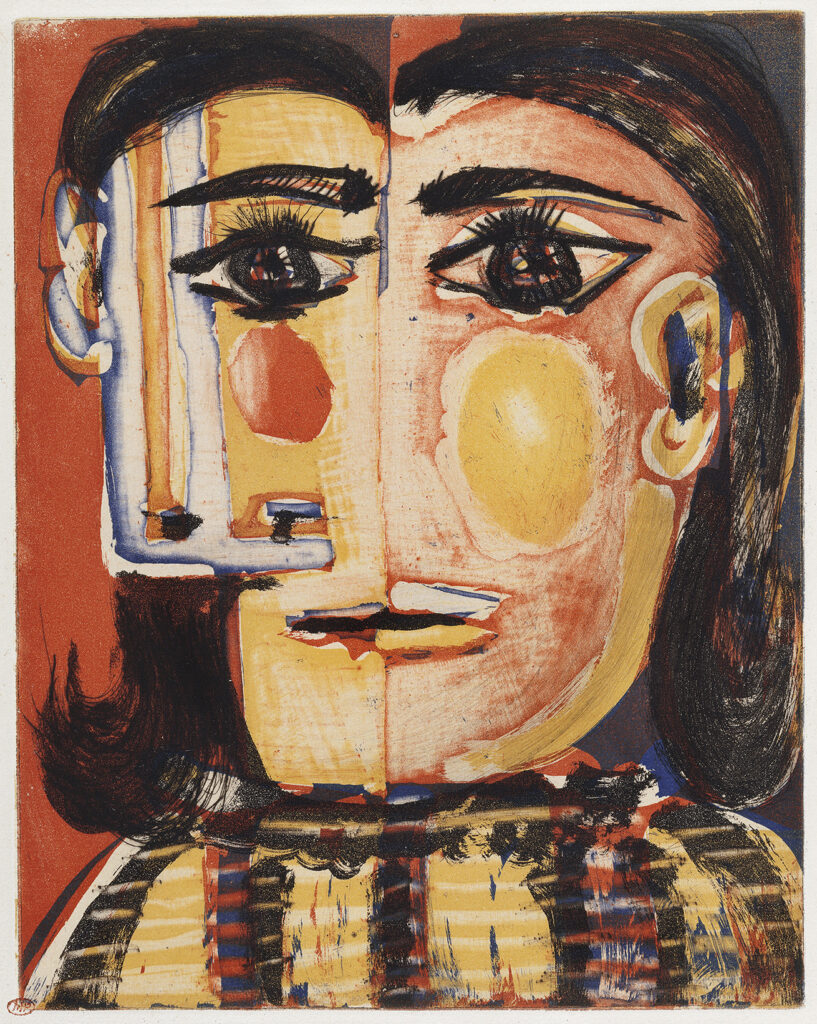
What truly sets this museum apart is its intimate connection to Picasso’s personal journey. Each piece showcased is a reflection of the artist’s inner world, as the collection comprises the works that Picasso cherished deeply and couldn’t bear to part with.
From his myriad artistic phases to the women who influenced his life, the museum gives visitors an immersive journey through Picasso’s remarkable styles, relationships, and career.
The Picasso Museum has works from Picasso’s early and late phases, in major and minor mode. There are more than 400+ Picasso pieces on display and a beautiful collection of his own handpicked pieces by artists he loved.
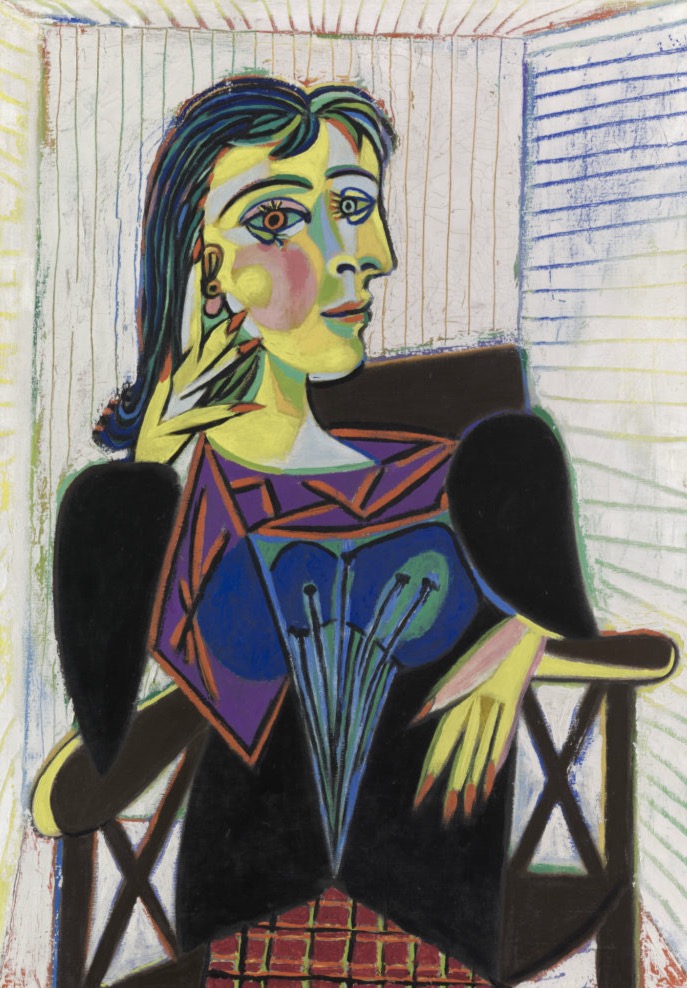
Because of this diversity, Paris’ Picasso Museum is a sublime teaching collection. You can get inside Picasso’s mind and see his restless imagination and boundless energy.
The Picasso Museum is organized chronologically. As you stroll through, you can feel the ebb and flow of his life.
And you can see, writ large, the progression of Picasso’s artistic styles and the succession of his long suffering female casualties.
Here’s my complete guide to Paris’ Picasso Museum . You’ll need to pre-book a skip the line ticket . You may also want to book a private tour .
- Address : Hôtel Salé 5, rue de Thorigny, Paris
- Metro : St-Paul, Rambuteau, or Temple
- Entry Price : adult €14
- Hours : Tues–Fri 10:30 am–6:00 pm, Sat-Sun: 9:30 am–6:00 pm, closed Monday
2. Picasso Museum, Barcelona Spain
Picasso moved from Malaga to Barcelona as a teen. He lived there from age 14-24 and considered it his true home. With help from his father, Picasso enrolled at the School of Fine Arts. A young Pablo fell in with a bohemian crowd that mixed wine, women, and art.
Barcelona holds a special place in Picasso’s heart as the city where his artistic journey unfolded. The Catalan charm left an indelible mark on him.
The Picasso Museum in Barcelona presents an immersive encounter with the artist’s legacy, showcasing an expansive collection that stands as Spain’s finest. With a staggering assemblage of over 3,000 pieces, the museum predominantly focuses on Picasso’s early years in Barcelona.
These formative works provide a valuable lens through which to comprehend his evolution as an artist. They bridge the gap between his youthful creations and the later abstract masterpieces that made him a towering figure in the 20th century art world.
READ : 3 Day Itinerary for Barcelona
The setting of this museum is stunning. It’s lodged in five adjoining medieva l stone mansions in Barcelona’s funky-chic El Born neighborhood in the Gothic Quarter, with a gorgeous terrace.
READ : Guide to Barcelona’s Gothic Quarter
Founded in 1963, the museum was launched with a donation of 574 works by Picasso’s secretary, Jaime Sabartés. It’s rumored that Picasso himself proposed the museum’s creation to Sabartés, a Barcelona native.
In 1970, Picasso donated 800 more pieces to the museum. Some were shocked that those works went to Spain and not France. Picasso’s widow, Jacqueline Roque, also donated 41 ceramic pieces and the early Picasso painting Woman with Bonnet.
In this museum, you can see one of the world’s most extensive collections of Picasso’s work, certainly the best collection in Spain.
There are over 3,000 pieces. Along with art from his early works, you’ll find Picasso’s series of Las Meninas paintings from 1957, inspired by the Velazquez painting in Madrid’s Prado Museum
READ : Guide to the Prado Masterpieces
You can browse the highlights of the museum’s online collection here , though the images are rather small.
>>> Click here to book a tour of the museum and Picasso’s Barcelona
- Address : Calle Montcada 15-23 08003 Barcelona
- Hours : 9:00 am to 8:00 pm, closed Mondays
- Entry : 12 euros, under 18 free
3. Picasso Museum, Antibes France
The Picasso Museum in Antibes is housed in the ancient and beautiful Grimaldi Palace and boasts some secret Picassos. From the terrace, you have a beautiful view over the bay. If you’re looking for an intimate quaint museum, this is it.
After WWII, Picasso left dreary Paris (and his first wife Olga) for the south of France, with his lover Francoise Gilot. An established artist at that time, Picasso was world famous and wealthy — a rare condition for any artist. He rented a house in the tiny village of Golfe-Juan.
Picasso played on the beach and used the museum’s medieval building as a studio in 1946. In Antibes, Picasso was happy and prolific. He declared, “I’m not just going to paint. I’ll decorate the museum too.”
In gratitude for the studio space, Picasso donated 23 paintings and 44 drawings to the town’s museum, on the condition that the works remain on display. This donation put Antibes on the Picasso tourist map and trail.
Picasso’s French Riviera works, like Joie de Vivre , reflect his later life. They’re sunny, lighthearted, and hedonistic. In Joie , a naked woman dances to music while a fishing boat bobs on the horizon.
READ : 10 Day Itinerary for Southern France
- Address : Chateau Grimaldi, Place du Chateau, 06600, Antibes
- Hours : 10:00 am to 1:00 pm & 2:00 pm to 6:00 pm
- Entry fee : 6 €, 3 € for students and seniors, under 18 free
4. Picasso Museum, Malaga Spain
Malaga is Picasso’s birthplace. Opened in 2003, the Picasso Museum in Malaga is housed in the Buena Vista Palace.
The palace is a pretty combination of Renaissance and Mudejar architecture. So important was the museum that the King and Queen of Spain attended the museum’s grand opening.
READ : Most Beautiful Towns and Cities in Andalusia
Small but sweet, the museum holds 285 works donated by Picasso’s family members or held on permanent loan. Mostly from his grandson Bernard.
The collection spans Picasso’s lifetime and gives a good overview of his protean seven decade career. You won’t find any masterpieces here. But highlights include Picasso’s early academic studies, Cubist pieces, his re-workings of the Old Masters, ceramics, and some of his last paintings from the 1970s.
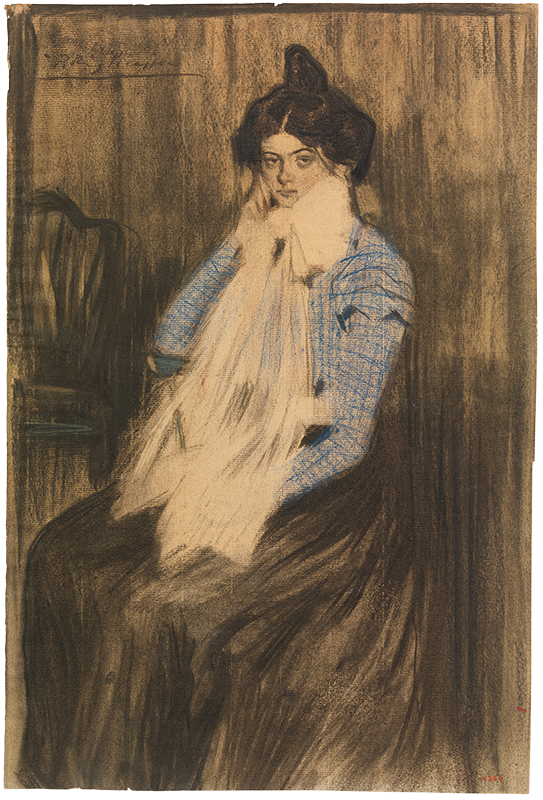
In his last decade, Picasso began to incorporate figures from Spain’s Golden Age. In particular, he painted musketeers inspired by the paintings of Rembrandt and Velazquez.
The Antibes museum is tiny, so you won’t need much time there. Download the museum’s audio app, which is extremely informative and free.
When you’re done, two minutes away is the home of Picasso, Casa Natal de Picasso . Opened in 1988, the house provides insight into Picasso’s childhood. There’s a replica of Picasso’s studio and and his family’s personal memorabilia.
- Address : Calle San Agustin 8, 29015 Malaga
- Hours : change by season, in summer, 10:00 am to 8:00 pm
- Entry fee : 9.50 €
5. Reina Sofia, Madrid
Opened in 1992, the Reina Sofia is Madrid’s modern art museum. Its collection is comprised entirely of art work from 1900 to the present. There’s a special focus on Picasso and it holds perhaps his most famous painting.
The star of the Reina Sofia, and the toast of Europe really, is Picasso’s Guernica.
Guernica is Picasso’s grim depiction of the seemingly casual Nazi bombing of the Basque village of Guernica in 1937. Painted on a giant oak wood stretcher, the painting puts a human face on the collateral damage.
READ : 2 Day Itinerary for Madrid
The dark chaotic subject matter is shown in gruesome detail, complete with a modern pieta, a hidden human skull, and daggers. The monochromatic color only heightens the emotional impact.
The huge mural was commissioned by the Spanish government to decorate its Pavilion at the 1937 Paris International Exposition. Picasso rarely took commissions. They cramped his style and produced artificial deadlines.
But Picasso was persuaded to accept this one by his lover and Surrealistic photographer, Dora Maar. Guernica is showcased in a room with Picasso’s preparatory drawings, so you get a real feel for his creation process.
The Reina Sofia also has quite a number of works from Picasso’s Cubist period, myriad sketches, and sculptures.
The Reina Sofia is located in a 16th century hospital. It can be a bit confusing. The permanent collection is spread across four floors. You’ll need a map for locating specific artists or masterpieces. ( Guernica is in Room 6 on the 2nd floor.) Photos are only allowed in certain areas.
The Reina Sofia has an extensive online collection as well.
>>> Click here to book a ticket to the Reina Sofia
- Address : c/ Santa Isabel, 52 28012 Madrid
- Hours : Mon. & Wed-Sat 10:00 am to 9:00 pm, Sunday: 10:00 am to 2:30 pm, Closed Tuesdays. Free on Saturday after 2:30 pm and all day Sunday.
- Entry fee : 12 €. Free for students with ID, under 18s & over 65
- Metro : Atocha
6. Rosengart Collection, Lucerne Switzerland
This museum has a stunning Picasso collection. Opened in 2002, the Museum Rosengart Collection was founded by vanguard Angela Rosengart.
Born in 1932, she was a forward-thinking woman. Offered an evening gown for her birthday, she instead requested a drawing by Paul Klee.
Beginning in 1948, Rosengart was active an art dealer, collector, and influencer. She counted Picasso as a personal friend.
Rosengart modeled for Picasso five times, quite platonically. Of her portraits, Rosengart says she “snuck into immortality through the back door.”
Housed in the former Swiss National Bank, the Rosengart Collection is spread over 3 floors. The entire ground floor is dedicated to Picasso. His 50 works are arranged in chronological order, from 1938 to 1969.
You can see photos of Picasso from American photojournalist David Douglas Duncan, documenting his life and work. And there are five portraits of Rosengart.
The collection also includes works by Chagall, Degas, Cézanne, Kandinsky, Miró, Matisse, Renoir, Monet, Pissaro, and Seurat.
- Address : Stiftung Rosengart, Pilatusstrasse 10, CH – 6003 Lucerne
- Hours : Daily Apr to Oct: 10:00 am to 6:00, Nov to Mar: 11:00 am to 5:00 pm
- Entry fee : CHF 20
7. Ludwig Museum, Cologne Germany
The Ludwig Museum is a splendid modern art museum and a great place to see Picasso’s art in Europe. It boasts works from most of the key 20th century art movements.
But the museum is most famous for its cache of 864 works by Picasso. Over 700 works were donated by Irene Ludwig, widow of the chocolate magnate and art collector Peter Ludwig,
The Ludwig Museum has the world’s third largest Picasso collection, after the museums in Paris and Barcelona. All the oeuvres spanning Picasso’s career are represented. The collection includes paintings, ceramics, works on paper, relief plates, and graphic prints.
The museum highlights are: a sculpted head of Picasso’s mistress, Dora Maar, Picasso’s variation on Manet’s Déjeuner sur l’herbe , the first print he made in Paris, Le Repas Frugal, Woman with Artichoke , and Harlequin .
The Ludwig Museum is the only public institution to own all three large print cycles by Picasso – The Vollard Suite (1930-1937), Suite 345 (1968) and Suite 156 (1971).
READ : Prettiest Towns in Germany
- Address : Heinrich-Boll-Platz, 50667, Cologne Germany
- Hours : 10:00 am to 6:00 pm, open until 10:00 pm the first Thursday of the month
- Tickets : 11 €
8. National Picasso Museum, Vallauris France
Picasso briefly lived in Vallauris, a seaside village where he became fascinated with the art of decorative ceramics. A jack of all trades, Picasso learned this medium at the Madoura Studio. In Vallauris, you’ll find a small museum dedicated to Picasso, housed in a 12th century chateau.
Highlights are the church chapel installation by Picasso, a stellar ceramics collection, lithographs of bullfights, and photographs of Picasso by Andre Villers. You will also informational histories on Picasso’s stay in the French Riviera in the 1940s.
In 1952, Picasso painted an allegorical mural, War and Peace, to decorate the chapel. A peace-loving Communist by then, Picasso had a vision of turning the old deserted sanctuary into a Temple of Peace.
Picasso produced two compositions of monumental proportions on hardboard panels that mirrored the curvature of the vaulting.
The museum ceramics collection include whimsical Picasso depictions of fauna and nymphs. For the glaze, Picasso would melt clay like bronze. Then, with child-like glee, he decorated plates and dishes with his favorite subjects.
- Address : Place de la Libération, 06220 Vallauris, France
- Hours : Hours change by season and allow for a siesta, so check the website linked below.
- Ticket : 6 €
8. Museum of Photography in Mougins
Picasso first discovered Mougins with his lover Dora Maar. In 1961, he returned. Picasso spent the last 12 years of his life in a beautiful estate, surrounded by magnificent gardens, in Mougins.
In 1986, the photographer Andre Villers founded the Mougins Museum of Photography. It showcases a splendid collection of photos of Picasso taken by the photographers Andre Villers, Robert Doisneau, and David Douglas Duncan.
There are also photos of some of the art world’s most interesting personalities, such as Le Corbusier, Dali , Miro, Leger and others.
- Address : 67 Rue de l’Eglise, 06250, Mougins France
- Hours : Open Tues to Sun from 10:00 am to 12:30 pm & 2:00 pm to 6:00 pm
- Tickets : free
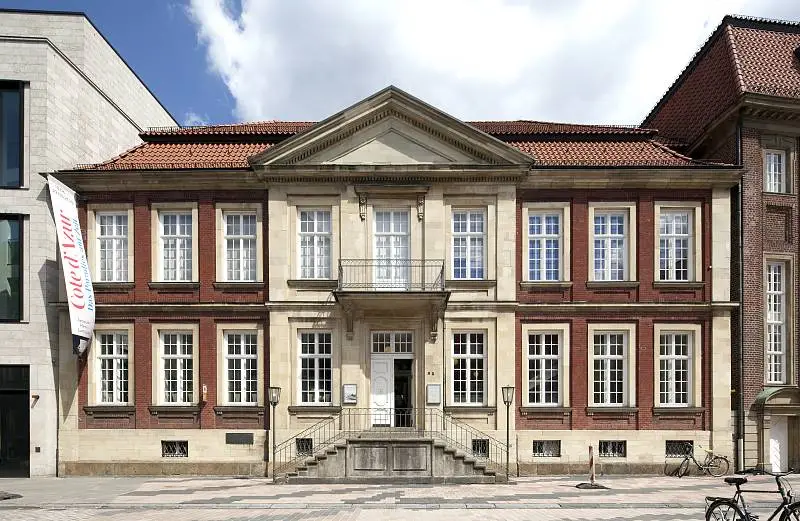
9. Pablo Picasso Art Museum, Munster Germany
This is the first and only Picasso Museum in Germany. It opened to the public in 2000. The museum has a cache of over 800 Picasso lithographs.
The museum shows changing special exhibitions on Pablo Picasso and his fellow classical modern artists such as Georges Braque, Henri Matisse and Marc Chagall. You can probably breeze through in an hour or so.
- Address : Picassoplatz 1, 48143 Munster
- Hours : Open Tues to Sun from 11:00 am to 5:00 pm
- Tickets : 10 euros
Hutin-Blay’s collection includes nearly 2,000 pieces — paintings, drawings, ceramics, sculptures, and photographs. There are 400 portraits of Jacqueline. The works have never been exhibited before March 2019, when they were on display in Berlin.
Plans for the site included 10,000 square feet. Spaces were planned for a permanent exhibition, temporary exhibitions, an auditorium, a research center, and a pottery center.
I hope you’ve enjoyed my guide to the Picasso Trail in Europe. You may enjoy these other Europe travel and museum guides:
- Impressionism Trail in Normandy
- Guide to Monet’s Giverny
- 30+ Best Museums in Paris
- Best Museums in Spain
- All of Leonardo da Vinci’s Paintings
- 25 Secret Towns in France
- 33 Secret Towns in Spain
- 30 Most Beautiful Towns in Italy
- 20 Hidden Gems in Europe
If you’d like to visit the Picasso Museums in Europe, pin it for later.
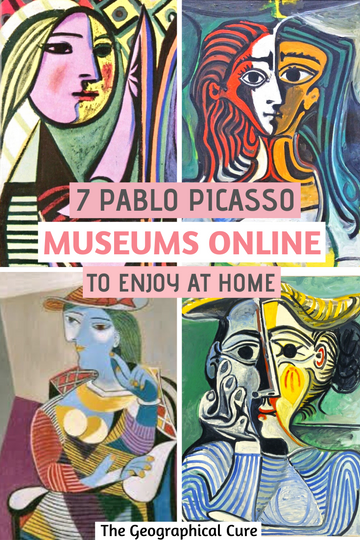
Leave a Comment Cancel reply
Save my name, email, and website in this browser for the next time I comment.
Last Updated on August 17, 2023 by Leslie Livingston
Enter a search term or a page code from the guide.

Picasso Museum Paris

Your one-stop travel plan with all the info you need
Add this and other places to your personal travel plan. We will then help you with further suitable suggestions: free of charge and fast!
The Picasso Museum Paris has an unrivaled collection of the great artist’s work that allows it to create exclusive exhibitions revealing the full scope of his creativity. Housed in a historic stately home in the vibrant Marais district of Paris, the Picasso Museum Paris strives to offer genuine insight into the artist. I’ll tell you everything about the museum: how to get there, what you’ll see and why it’s worth a visit.
More articles about Paris
- The ultimate Paris Guide
- The 23 best sights in Paris
- Dinner Cruise Paris: Dining with a fantastic view
Kickstarted with a massive donation from the artist’s estate, there are over 5,000 Picasso works in the diverse collection: including celebrated sculptures, early drawings, personal notebooks, and even his own collection of art from contemporary artists. Visitors are presented with extended temporary themed exhibitions that shine a light on his life’s work. It is a museum that appeals to Picasso devotees and anyone with a passing interest in 20th Century art.
Ticket info for you
table of content
Picasso Museum Paris – What is it?
Unlike most museums and art galleries, the Picasso Museum Paris was constructed after the art collection was created. A 1968 law called dation invited residents to donate valuable art to the state to settle inheritance tax bills. Pablo Picasso, a long-term resident of France, asked his family to use this system upon his death. Consequently, the French state found itself in possession of around 228 paintings, 129 sculptures, and over three thousand drawings and engravings from his estate.
Needing a home for this vast and important collection, the Picasso Museum Paris was founded. After much debate, the museum was built in the stately and historic Hôtel Salé, owned by the City of Paris. Since then, more Picasso art has been purchased or donated, growing the collection by around 1,000 exhibits. Further artworks have also been received by descendants of Pablo Picasso, using the dation tax-relief scheme.

In addition to works by Picasso, there are a small number of artworks from celebrated artists that were in Picasso’s personal collection, including his rival Matisse. Following a costly and delayed renovation, the enlarged museum has focused on creating temporary themed exhibitions, drawing upon their exceptional library of Picasso works.
With peerless access to the artist’s personal collection, including some of his earliest and latest pieces, the Picasso Museum Paris builds fascinating and insightful exhibitions, unlike any other Picasso museum.
How to visit Picasso Museum Paris: Tickets & Tours
If you plan to visit Picasso Museum Paris, it is recommended to check if the current exhibitions interest you. In 2022, there are two exhibitions. The long-term Picasso Image exhibition weaves together videos of the artist alongside associated works from the museum’s collection.
A second short-term exhibition — 16 April to 31 December — focuses on works donated by his daughter Maya Ruiz-Picasso in 2021.When there is no short-term exhibition, some floors are closed.
To avoid the line, I recommend you to buy Picasso Museum tickets online in advance.
You can also visit the museum on a guided tour.
Musée Picasso Ticket Prices
- Standard ticket: €14
- Ages 17 and younger do not require a ticket
Paris Museum Pass holders can visit without a ticket.
Audio guide: €5 (reduced to €4 for Paris Museum Pass holders, EEA residents aged under 26, disabled visitors)
If you’re in Paris on the first Sunday of the month, the Picasso Museum Paris — and many other museums in Paris — offers free entry.

How to save Money
If you want to visit more than one museum in Paris, the Paris Museum Pass may be worth your while. The pass grants access to 50+ museums for 2-6 days, saving Euros if you cram in enough attractions. Check out the prices and the attractions available here .
Is the visit worth it?
Picasso Museum Paris has an unrivaled Picasso collection, allowing curators to build truly original exhibitions. Picasso himself said he was the “greatest collector of Picassos in the world,” and much of that collection resides at the Picasso Museum Paris.
Housed in an impressive and historic Marais townhouse, visitors are invited to learn more about the man behind the popular image. Expect to see some of his earliest works, like The Barefoot Girl, and some of his most beloved sculptures, like the Bull’s Head.
Visitors may be disappointed that only a selection of his works is on show at any one time. Yet if you appreciate the works of Picasso or 20th-century art, a visit to the Picasso Museum Paris is always engaging and unique.
Picasso Museum Paris History
The story of the Picasso Museum Paris begins in 1973, upon the death of the fabled artist. Following his wishes, much of his vast personal collection was donated to the French government to settle inheritance taxes. With such a significant donation, the state was presented with a problem: where to maintain the collection and, more importantly, display it for public consumption.
Following a hotly contested public consultation, it was decided to create a new museum in the historic Hôtel Salé. Hôtel Salé is a magnificent 17th century townhouse (hôtel particulier) in the Marais district of Paris. Built by a salt tax collector (salé means salted), the building was repurposed several times over its lifetime.
Most notably, Hôtel Salé was once the Embassy of the Republic of Venice and the home of a duke (François de Neufville, Duke of Villeroy). In the 19th century, it became an art school where the legendary French writer Honoré de Balzac studied.

In 1964, it was acquired by the City of Paris. Lying empty, it was the ideal home for the new Picasso Museum Paris. It took 9 years (1976 – 1985) to transform the designs of architect Roland Simounet into the new Picasso Museum Paris.
In subsequent years, the museum acquired more works from Picasso’s family. It also acquired around 1,000 pieces through auctions and donations. In 2009, the Picasso Museum Paris closed for expansion and renovation. After reopening five years later, the enlarged displays have been continually arranged in themed exhibitions showcasing the artist’s varied legacy.
Where is Picasso Museum Paris?
In the lively and interesting Marais district.
5 rue de Thorigny 75003 Paris
How do I get to Picasso Museum Paris?
The nearest Metro stations are: Saint-Paul (line 1) St. Sebastien-Froissart (line 8) RER – Châtelet to Les Halles.
Buses stop at: Saint-Claude (96) Rue Vieille du Temple (29) Turenne-Saint-Gilles (29) Routes 20, 65, 69, 75 also stop nearby.
Do I need to book in advance?
Booking in advance will allow you to skip the line, but you must arrive at your selected time.
How long should I allow to visit Picasso Museum Paris?
2 hours is recommended.
What is there to visit nearby?
Sitting in the historic and spirited Marais district, there is much to see nearby. Highlights include:
- Centre Pompidou – the distinctive and divisive modern art center (1 km / 0.6 miles)
- Musée Carnavalet – an absorbing museum exploring the history of Paris (350 m)
- Île de la Cité – the unmissable island in the Seine River, home to Notre Dame Cathedral, Sainte Chapelle, and linked by Paris’s oldest bridge, the Pont Neuf (1.6 km / 1 mile)
Where to get refreshments?
There is an on-site rooftop cafe with a terrace, Maison Caron. Drinks and snacks can be purchased there while enjoying a stunning view over Hôtel Salé.
Alternatively, you can walk in any direction and find a bewildering choice of cafes, bars, and restaurants. This includes the popular crêperie, Breizh Café (109 Rue Vieille du Temple) and the aptly named Le Café des Musées (49 Rue de Turenne.)

The Ultimate Paris Guide 2024

The 30 best sights in Paris

Dinner Cruise in Paris: Dining with a fantastic view

I love traveling! Whether it's the Australian outback, the fjords of Norway or city trips to the most beautiful cities in the world like Paris, Singapore, Barcelona or New York - I'll write down my best tips so that your trip will be a very special highlight.
Get exclusive content, real insider info and the best travel deals completely FREE!
Your trip start: We’ll provide you with little reminders to prepare for your trip and up-to-the-minute events when you’re traveling!
You have disabled JavaScript
JavaScript is required to use this website. Therefore, please enable JavaScript in your browser to visit this website.

15 Best Museums in Paris to Visit with Kids
T his guide lists all the best museums in Paris to visit with kids so that you can keep them educated and entertained during your trip to the City of Light. Art museums are listed, sure, but some are more kid-friendly than others. There are also magic, science, and military museums which are the best places to learn about the history of Paris while having a fun family city break.
*Disclosure: This post may contain affiliate links, which means we may receive a commission if you click a link and purchase something we have recommended. Please check out our disclosure policy for more details. Thank you for your support!
Top Museums in Paris to Visit with Kids
The French capital city is famous for many reasons. Aside from its delicious pastries and rooftop views, Paris is known for its world-class museums. There are over 130 of them! Many are niche art museums (Musée Marmottan Monet, Musée de l’Orangerie, and Musée Picasso), whereas some are temporary spaces for traveling exhibitions (e.g. Grand Palais and Petit Palais). But not all of them are the best museums in Paris for kids!
Don’t forget to look into the Paris Museum Pass to save money on entrance fees!
1. Louvre Museum (Musée du Louvre)
Whether you are visiting Paris with kids or without, you cannot skip the most famous museum in France! The Louvre is the largest museum on Earth. It measures 652,300 square feet/73,000 square meters and its impressive collection is second to none.
The Louvre is on the Rue de Rivoli just a short walk from Place de la Concorde and Tuileries Garde. Its exhibition space is a former 14th-century palace. It boasts paintings and sculptures from ancient eras like the Egyptians and Romans through to the Middle Ages up to 1848. Amongst the famous works are Leonardo da Vinci’s Mona Lisa and the Greek statue Venus de Milo .
Visiting the Louvre is cost-effective for families because children have free admission. We recommend families book a tour or at least a skip-the-line ticket. There are too many works by renowned artists that you can’t possibly see everything. Let an expert show you and your kids the most exciting and famous works!
Our Favorite
Family-friendly louvre tours.
- Context Travel – Louvre Museum Tour for Kids
- With Locals – Louvre at Night Tour with a Local
- Viator – Family-Friendly Skip The Line Private Guided Louvre Tour
- GetYourGuide – Louvre Treasure Hunt for Families
2. Orsay Museum (Musée d’Orsay)
The Musée d’Orsay is also one of the best art museums for kids in Paris to visit. Or for anyone to visit! The museum’s permanent collection and temporary exhibits date from 1848 to 1914.
Most are 19th-century realist and post-impressionist paintings and sculptures by famous artists like Henri Matisse, Vincent Van Gogh, Paul Cézanne, and Edgar Degas. It boasts one of the biggest collections of paintings of water lilies by Claude Monet.
One of the reasons why it’s one of Paris’s most famous museums is the building itself. The museum is housed in a gorgeous train station which originally opened in 1900, meaning it could easily be one of the museum’s exhibits! Kids will also love the huge train station clock by the café which is still in use.
Follow the audio guide specifically created with young people in mind to make the visit more enjoyable for your children. Don’t forget to book skip-the-line tickets because it’s a popular and busy museum at any given time of year.
3. Fairground Art Museum (Musée des Arts Forains)
Another fun art museum in Paris is the Musée des Arts Forains. Located slightly outside of the city center near Bercy Train Station, Musée des Arts Forains is situated in a former wine cellar full of old fairground rides and props from theaters and concert halls.
Musée des Arts Forains is a small museum that can only be visited by guided tour. Be sure you book in advance !
This is an off-the-beaten-path fun museum that is a great experience for older kids who will have fun participating in all the old funfair rides and games. It is recommended for children above five and all kids aged 11 and under benefit from discounted tickets.
4. National Museum of Modern Art at the Pompidou Center (Musée National d’Art Moderne)
If your kids are art lovers, you don’t want to miss the National Modern Art Museum at Le Centre Pompidou . With over 10,000 works in its permanent and temporary exhibitions, it boasts the largest collection of modern and contemporary art in Europe.
You’ll find works dating from 1905 to the present day by top artists like Marc Chagall’s The Fall of Icarus , Frida Kahlo’s The Frame , and La Muse by Pablo Picasso.
Like Musée d’Orsay, one of the best things about visiting the Pompidou Center is the building. Originally opened in 1977, its glass and metal structure resembles brightly-colored arteries feeding into a heart.
Younger kids will love the Galerie des Enfants, a gallery designed for children. Older kids aged 13 – 16 might enjoy Studio 13/16. Because many modern works are brightly colored, children might find the works at the National Museum of Modern Art more engaging and interesting.
5. The Army Museum at Hôtel des Invalides (Musée de l’Armée)
There are tons of museums for kids in Paris that aren’t art galleries! A great place to visit with kids is the Army Museum .
The museum is split into two departments: the old and the modern. The Old Department covers battles and military life between the 13th and 17th centuries while the Modern Department focuses on everything from King Louis XIV’s reign to Napoleon III including the French Revolution.
One of the best things to see in the museum is Emperor Napoleon I’s tomb which is just behind the museum. The building itself, Hôtel des Invalides, is also stunning. It’s a 17th-century Baroque structure built to house wounded military but today it’s a church, government office, and museum.
Children under 18 have free admission and activity books are available for young kids. Storytelling and other guided tours for kids are available from the museum guides but unfortunately, these are only in French.
6. National Museum of the Middle Ages at the Cluny Museum (Musée National du Moyen Âge)
Housed in yet another incredible building, Musée de Cluny is inside a beautiful Gothic mansion with turrets only a short walk from Paris’s iconic Left Bank. It’s one of the best history museums for kids in Paris and covers medieval paintings, crafts, and other decorative arts in the Middle Ages. If you are visiting Paris with teens , this is one of our favorites.
Just some of the permanent exhibits include the Altar from Basel Cathedral, stained glass windows from the church Sainte-Chapelle, and various tapestries. There’s also a medieval-inspired garden and a video guide where kids can learn more about what’s on display.
It’s a popular museum for school groups to visit during the week which is a good sign that it’s the perfect place to take kids! The Cluny Museum is also free for children ages 18 and under.
7. Grévin Wax Museum (Musée Grévin)
Not every museum you visit has to be educational – there are many museums for kids in Paris that are just for fun!
Musée Grévin is a super family-friendly waxwork museum with models of over 200 French people throughout history to the present day. Napoleon, Joan of Arc, and even famous animated figures are all on display. Plus, the baroque building that Musée Grévin is housed in is gorgeous with ornate gold carved ceilings.
Children under five can enter for free and there is a discounted rate for kids under 18. Feel free to interact with the waxworks and take as many photos as you want!
8. National Museum of Natural History (Muséum National d’Histoire Naturelle)
First established as a botanical garden by King Louis XIII in 1636, the National Museum of Natural History is one of the best museums in Paris for kids. It’s housed in a beautiful building in Jardin des Plantes which also boasts a zoo, so it’s a must on any Paris family vacation itinerary!
Not only does the museum house rare plants thanks to the museum’s inception as a botanic garden, but it also displays dozens of dinosaur skeletons, taxidermied mammals and sealife, insects, and more.
The Gallery of Evolution is a separate building but is the pièce de résistance of the Natural History Museum complex. It boasts over 7,000 animal species showcasing the evolution and life cycles of various animals.
This museum is the perfect place to take animal-loving children. It’s well worth looking into pac kage passes if you want to visit one or more museums and attractions in Jardin des Plantes. You could save a lot of money!
9. Museum of Magic (Musée de la Magie)
Musée de la Magie is tucked away in the Saint Paul neighborhood across the Seine from Notre Dame Cathedral. It’s part museum, part performance venue. It’s perfect for children who are fascinated by magic or the macabre.
In the museum section of the building, you’ll find costumes, posters, gadgets, and more dating from the 1700s to the present day. Check their program before visiting if your children are interested in performances, workshops, and card trick classes as many of these are specifically run for kids.
It’s not as big or as polished as some of the national museums and art galleries, but that’s its charm (pun intended)! Children up to 12 years old get a reduced entrance fee.
10. CSI Science and Industry Museum (Cité des Sciences et de l’Industrie)
Science museums are awesome and there’s no denying that the CSI is one of the best museums in Paris for kids. It’s the biggest science museum in Europe!
Located in La Villette Park, the Science and Industry Museum is worth a metro ride. It’s a shopping mall with floor after floor of exhibits including an IMAX cinema, robotics section, realistic simulations of house fires and natural disasters, and so much more.
There are plenty of interactive exhibits and cool displays, so it’s a great place to take kids who couldn’t help touching paintings in art museums! Booking a timed entrance slot is strongly recommended because locals and tourists alike love visiting the CSI museum.
11. Quai Branly Museum (Musée du Quai Branly – Jacques Chirac)
Only a stone’s throw from the Eiffel Tower, the Quai Branly Museum is one of the newer additions to Paris’s museum scene. Named after the street where it stands, this is a National Museum of Arts and Civilization that blends indigenous art with art from around the world.
This is one of the city’s largest museums. It houses one of the world’s largest collections of African Art as well as pieces from the Americas, Asia, and Oceania.
Check out their website for the museum’s program of children’s workshops and family activities during your trip. They often host performances and concerts which are always family-friendly!
12. Fluctuart Center for Urban Art (Centre d’art Urbain)
Do you think that art galleries like the Rodin Museum might not be a good fit for your children? Fluctuart not only fills the brief for being a fresh, modern urban art museum but it’s also housed in a cool structure. You’ll find Fluctuart in a purpose-built glass building on the bank of the River Seine.
Most of the artworks are bright, colorful pop art sculptures and paintings of famous people and political statements. Many works use 3D printing, mixed materials, and other artistic methods you’re unlikely to find in the Louvre! There’s also a café bar with beautiful views of the city.
There are free guided tours and everchanging temporary exhibits alongside the main collection. Even better, the museum is completely and 100% free for everyone!
13. Little Sprouts Art Museum for Children (Le Musée en Herbe)
There are tons of museums for kids in Paris. One of the best is Le Musée en Herbe, an art museum designed for children. If you’re traveling with kids older than toddlers but younger than ten, this is a great place to take them!
Le Musée en Herbe prides itself on interactive artworks based on the work of famous artists. Many works are based on video games and pop culture so they’re sensory and stimulating for little eyes. Children can also construct and deconstruct art made with blocks and tiles.
You can take self-guided or guided tours of Le Musée en Herbe but there are also treasure hunts and puzzles your kids can tackle as they walk around. It really is a perfect museum for kids!
14. Rodin Museum (Musée Rodin)
While a museum entirely dedicated to modern French sculptor Auguste Rodin (1840 – 1917) might not initially strike you as one of the best museums in Paris for kids, there’s a lot here that older kids might appreciate.
The Rodin Museum is housed in Hôtel Biron, a gorgeous 1730 mansion with beautiful formal gardens which are the perfect place for a quiet walk on a sunny day. Find some of Rodin’s best works like The Young Mother , The Kiss , and The Thinker . Sculptures can be found in the gardens and inside the museum.
There aren’t too many works in the permanent collection so your kids hopefully won’t get bored or feel overwhelmed. The gift shop sells small replicas of Rodin’s most famous works of art as well as sculpting kits if your kids are inspired to create art like Rodin too!
15. Discovery Palace (Le Palais de la Découverte)
Just outside of the Grand Palais is a huge science museum. While it specializes in astronomy, there are exhibits in several scientific fields including geoscience, life sciences, maths, computer science and so much more.
Visiting the planetarium is a must-do at Discovery Palace but there are plenty of experiments and activities families will enjoy.
Note that the Discovery Palace is often closed temporarily during the low season. If you are visiting Paris in winter be sure to check the hours. Traveling on a budget? This is a great place to add to your itinerary because both adult and child tickets cost less than €5!
Visit the Best Museums in Paris for Kids on Your Trip
There are so many museums for kids in Paris, it won’t be difficult to find the right place for your family. Some children, especially teens, will appreciate a beautiful museum like the Rodin Museum. Most will love seeing famous works of art at the Louvre in person!
But kids who are less interested in visual art and are more hands-on will enjoy the science, natural history, and magic museums. Hopefully, this guide to the best museums in Paris for kids has given you a ton of inspiration for your next family vacation to the French capital.
The post 15 Best Museums in Paris to Visit with Kids appeared first on Kids Are A Trip™ .
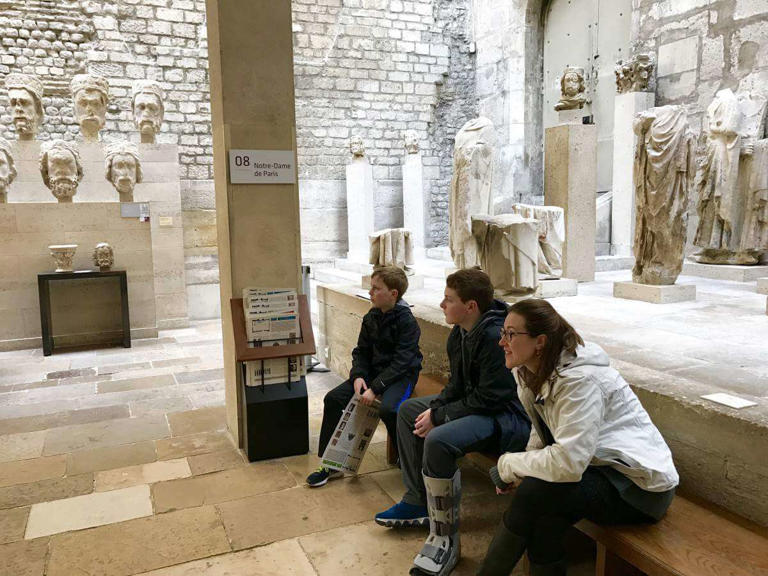

IMAGES
COMMENTS
Musée national Picasso-Paris 5 rue de Thorigny, 75003 Paris Tel : + 33 1 85 56 00 36. Opening times : From Tuesday to Friday from 9.30 a.m. to 6 p.m and during French school holidays. Closed on Mondays, January 1st, May 1st and December 25. Contact
2,962 reviews. #211 of 3,541 things to do in Paris. Speciality MuseumsArt Museums. Open now. 10:30 AM - 6:00 PM. Write a review. About. The Musée Picasso is located in the Hôtel Salé, one of the most beautiful 17th century private mansions in Paris. The Musée Picasso collection comprises over 5,000 works and tens of thousands of archived ...
How To Get To the Musée Picasso in Paris. The Musée Picasso in Paris is located in a beautiful former mansion known as the Hôtel Salé. It was built in the mid-17th century and repurposed in the late 1970s to house the museum's extensive collection. The museum is located in the chic and trendy neighborhood of central Paris called Le Marais.
The National Picasso Museum Paris in Brief. After Picasso's death in 1973, it was decided to dedicate a hotel to him in Paris. The Hôtel Salé, dating back to the 17th century in the Marais district, is a splendid residence and ideal for housing the masterpieces of the cubism founder. After enormous works, the museum was inaugurated by ...
The Musée Picasso-Paris collection comprises over 5,000 works and tens of thousands of archived pieces. For its quality and scope as well as the range of art forms it encompasses, this collection is the only one in the world to present both Picasso's complete painted, sculpted, engraved and illustrated œuvre and a precise record—through sketches, studies, drafts, notebooks, etchings in ...
The Picasso museum Paris is open from Tuesday to Sunday from 10:30 am (9:30 am on weekends) to 6 pm (the last admission is at 5 pm). Monday is a day off, as well as January 1, May 1, and December 25. Full-price tickets cost €14, while audio-guide rentals cost €5. If you have Paris Museum Pass, you don't pay the admission fee.
Practical Guide & Tips for Visiting the Picasso Museum in Paris: Location: The Picasso museum is located in the heart of the historic Marais neighborhood in the 3rd arrondissement of Paris. Hours: Tuesday through Friday from 10:30 am to 6:00 pm, Saturday and Sunday from 9:30 am to 6:00 pm. Closed Mondays.
1. Woman in the Garden. Fair use from Wikiart, Pablo Picasso. Pablo Picasso | 1929 | Iron, Paint, and Solder | Musée National Picasso-Paris. At 8.5 feet by 3.8 feet by 2.7 feet, Woman in the Garden is Picasso's largest sculpture and that feat earns our top spot on this list.
The best way to visit the Picasso Museum in Paris. Image courtesy of Edgardo Olivera on Flickr. With over 5,000 artworks on display, there is a lot to see at the Picasso Museum. And not to mention, there are tens of thousands of archived pieces on display as well. These include works in progress, drafts, photographs, letters, etchings, films ...
Musée national Picasso-Paris 5 rue de Thorigny, 75003 Paris Tel : + 33 1 85 56 00 36. Opening times : From Tuesday to Friday from 9.30 a.m. to 6 p.m and during French school holidays.
Best time to visit Picasso Museum. The best time to visit the Picasso Museum in Paris is when the attraction opens at 10.30 am. During the early morning, the museum sees minimal foot traffic, allowing you ample time and space to leisurely explore every corner at your own pace. Weekdays are better than weekends if you want to avoid the rush.
Centre Pompidou + Musée National Picasso Paris - With this €30 ticket you save €3 and get to visit the famous Centre Pompidou and Picasso Museum. Centre Pompidou is a unique building that hosts a library, an art museum and a center for music, it's definitely a must-see!
Musée national Picasso-Paris. 5 rue de Thorigny - 75003 Paris Le Marais. Book now. Located in the heart of the historic and trendy Marais, the Musée national Picasso-Paris is a must see among the great Parisian museums. The Musée national Picasso-Paris's exceptional collection is a result of a dation from Picasso's family members.
Look no further than the Picasso Museum in Paris, a treasure trove of the legendary Spanish painter's works. Here are 10 compelling reasons why this museum deserves a top spot on your Parisian itinerary. 1. The largest collection of Picasso's works in the world
The Picasso Museum in Paris reopened in 2014. The objective of the renovations and restorations was a success, and Museum attendance doubled as a result. In an effort to raise more funds for the project, the former Director of the Picasso Museum organized touring exhibitions across the globe. A total of 31 million euros was raised!
The Picasso Museum is a must-visit for anyone looking to immerse themselves in the captivating world of one of the 20th century's greatest artists. Europe. Western Europe. Belgium. ... The Picasso Museum in Paris: A Brief Overview. Nestled in the heart of the historic Marais district, the Picasso Museum calls the Hôtel Salé its home. ...
Top 10 Artworks to See Inside the Picasso Museum Paris. Still Life with Chair Caning. This painting is a still life, with Picasso's unique twist. The objects in the painting are arranged in an abstract way, and the chair is upholstered with actual cane. Les Demoiselles d'Avignon.
Picasso Museums In Europe: Where To See Picasso's Art. Let's follow the Picasso Trail in Europe and discover all the places you can see Picasso's art works. 1. Picasso Museum, Paris France. Nestled within the charming streets of the Marais neighborhood, Paris' Picasso Museum is a true gem that beckons art enthusiasts.
If you plan to visit Picasso Museum Paris, it is recommended to check if the current exhibitions interest you. In 2022, there are two exhibitions. The long-term Picasso Image exhibition weaves together videos of the artist alongside associated works from the museum's collection. A second short-term exhibition — 16 April to 31 December ...
Many are niche art museums (Musée Marmottan Monet, Musée de l'Orangerie, and Musée Picasso), whereas some are temporary spaces for traveling exhibitions (e.g. Grand Palais and Petit Palais ...